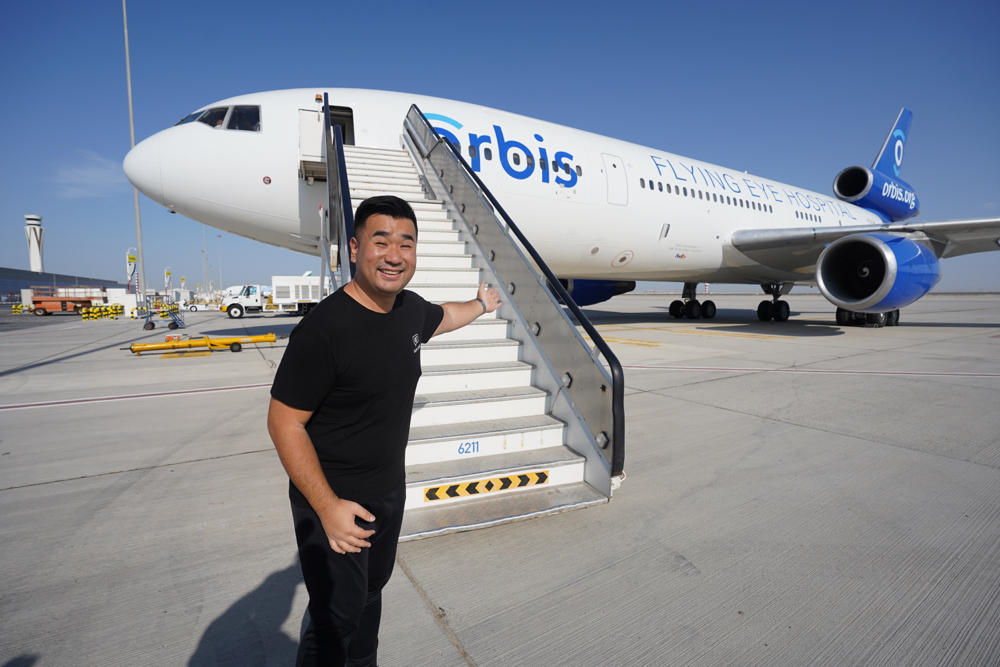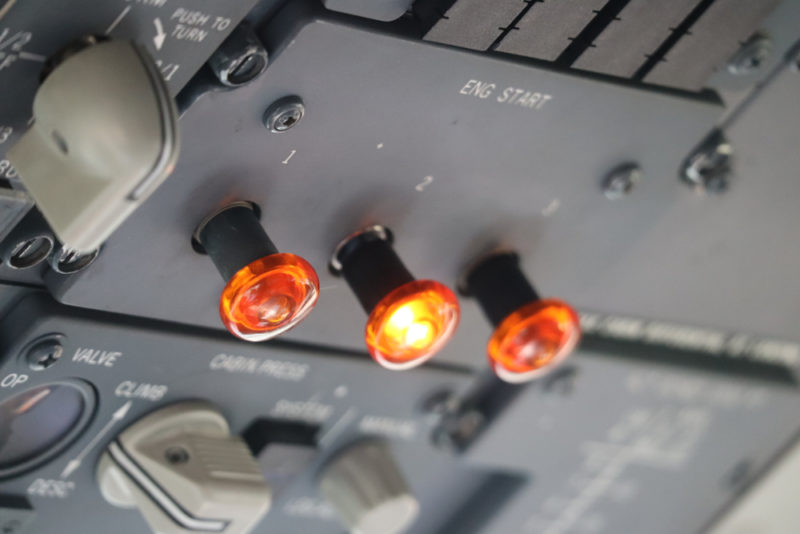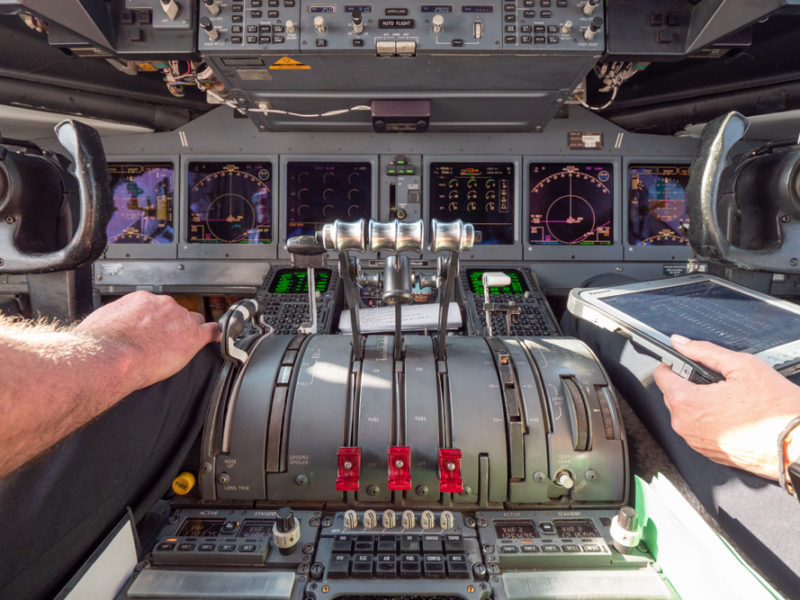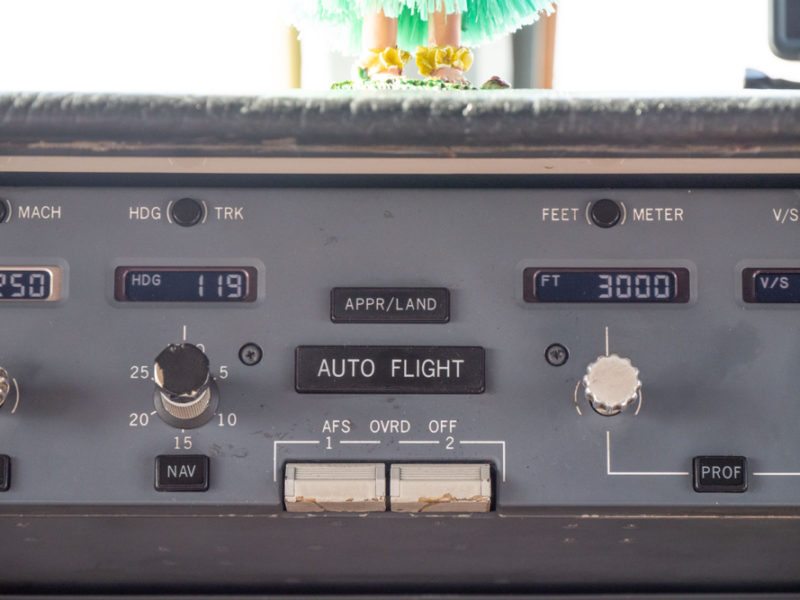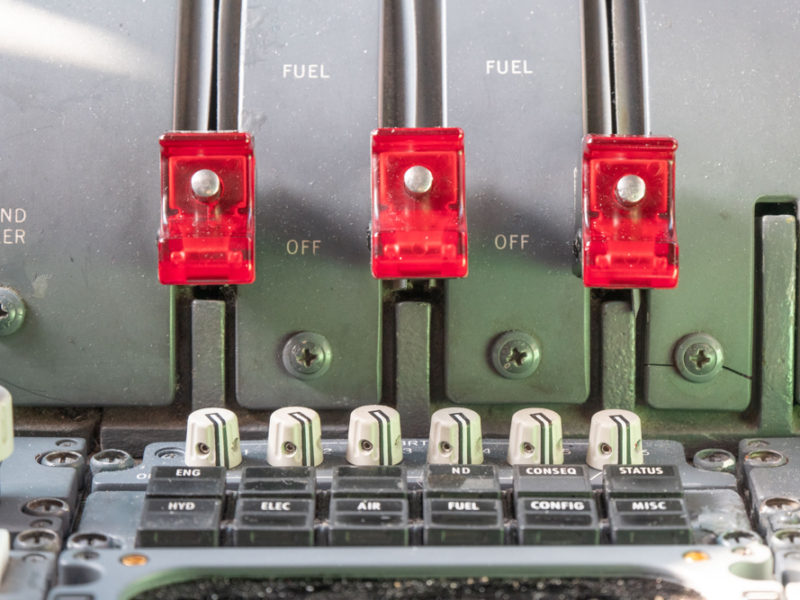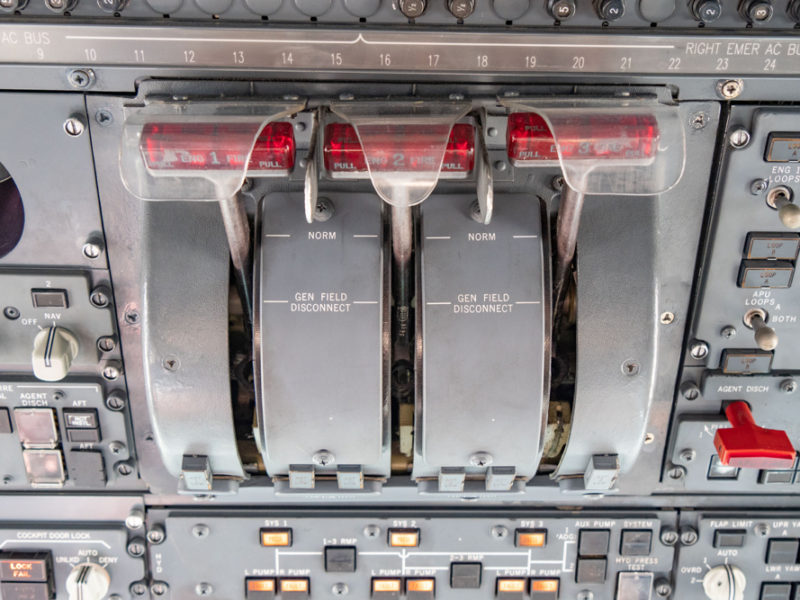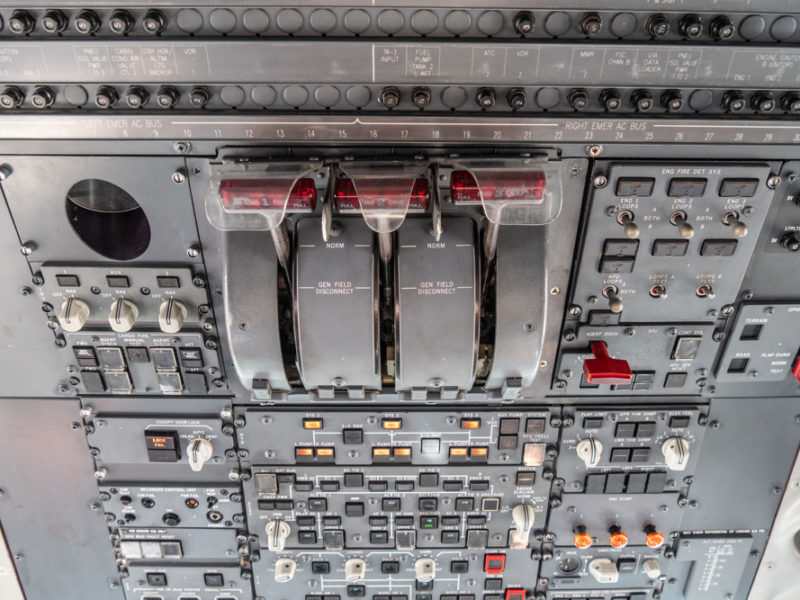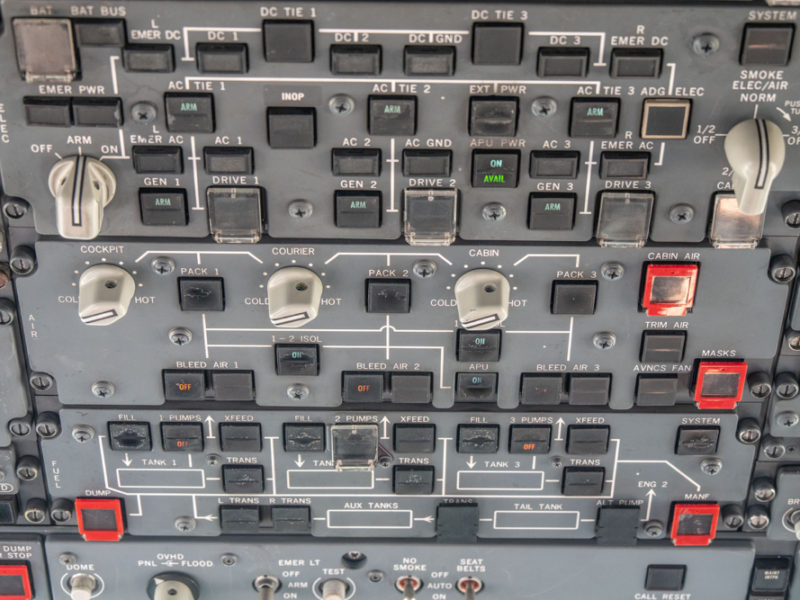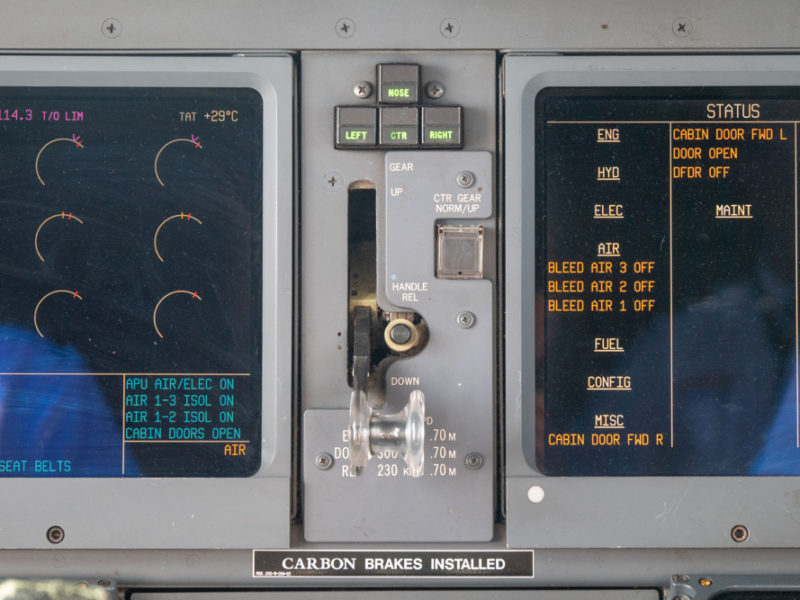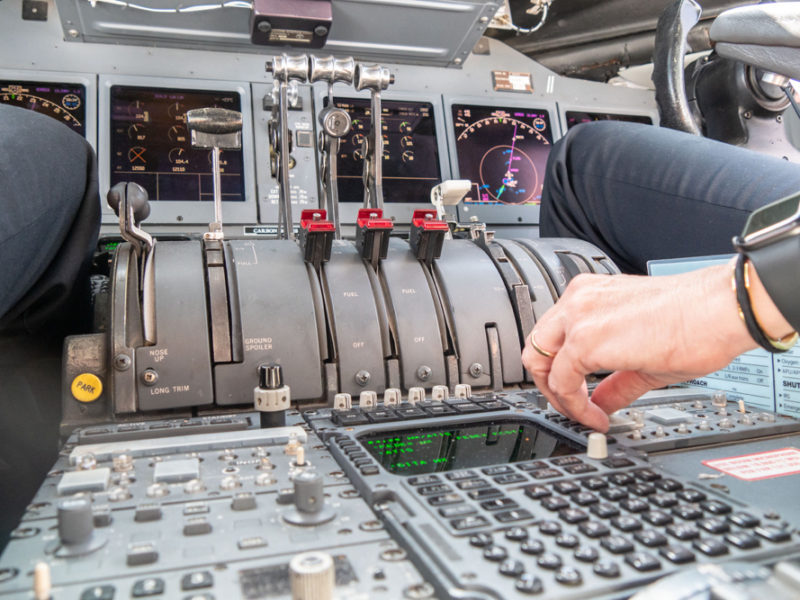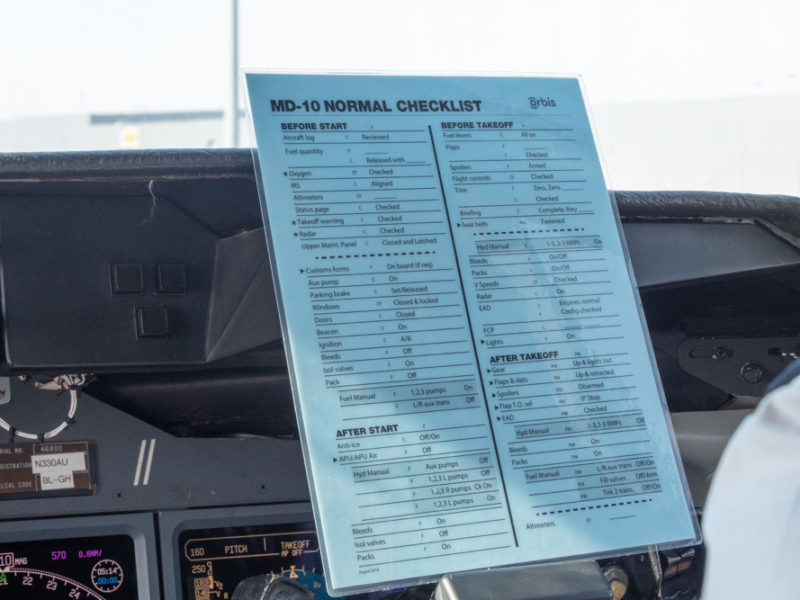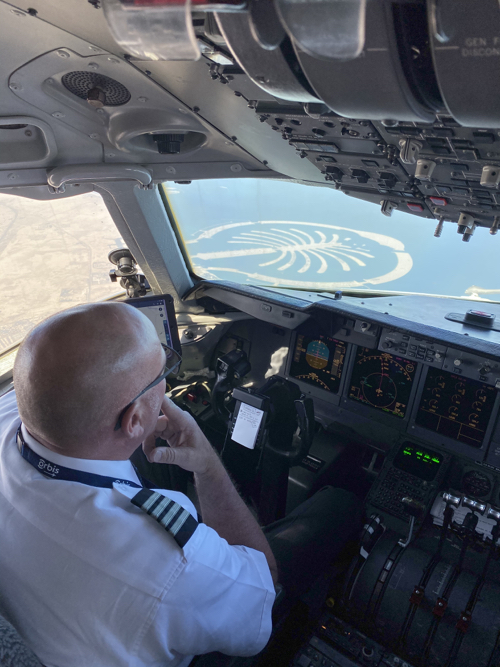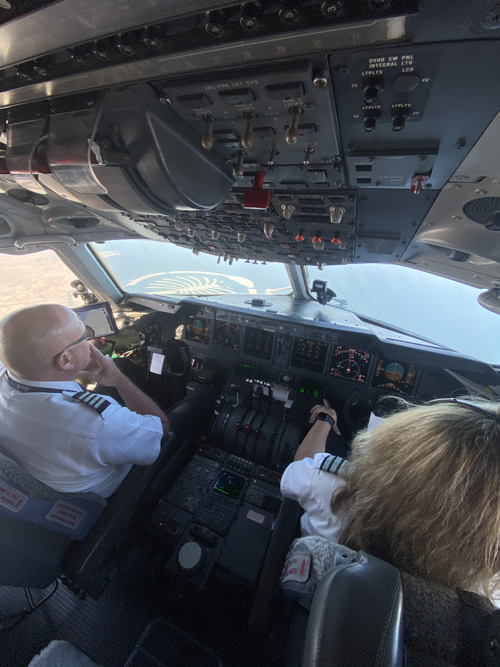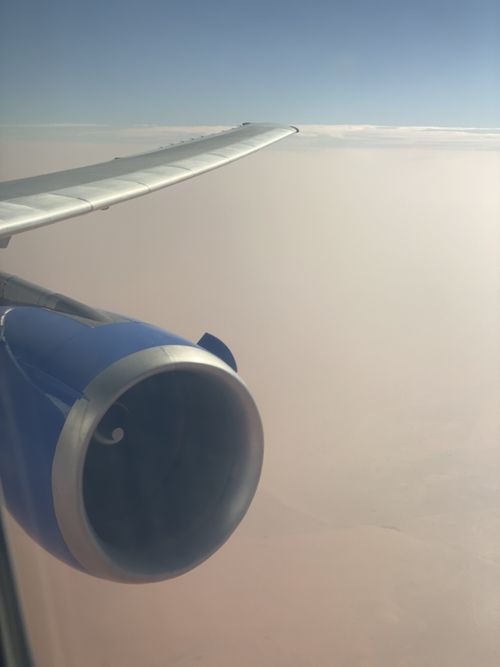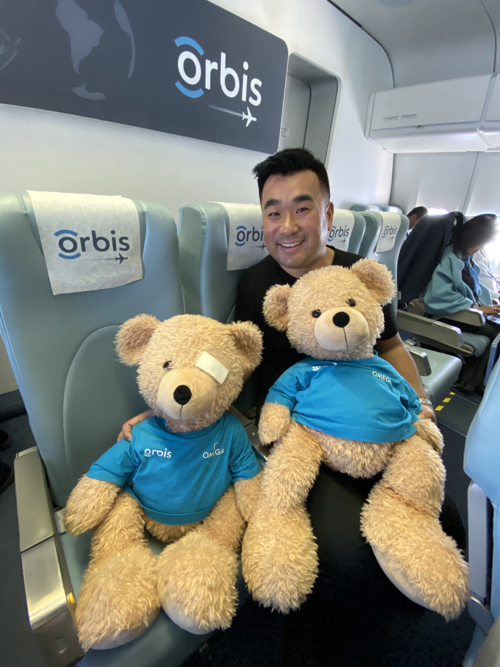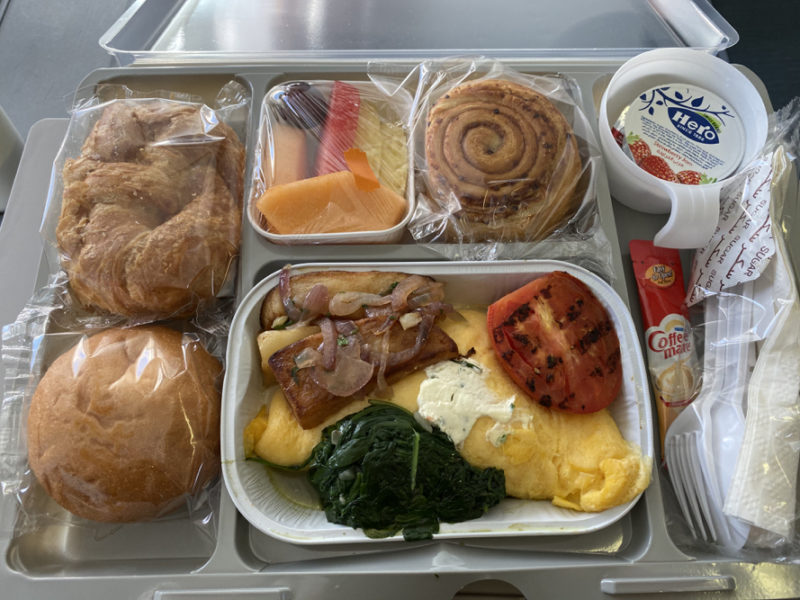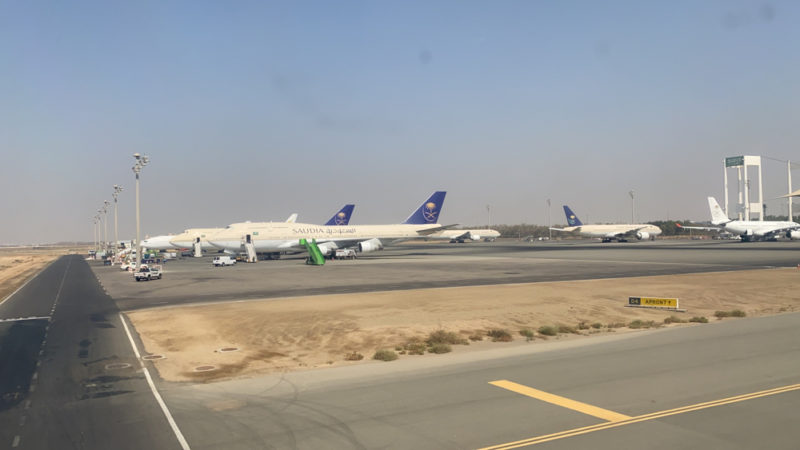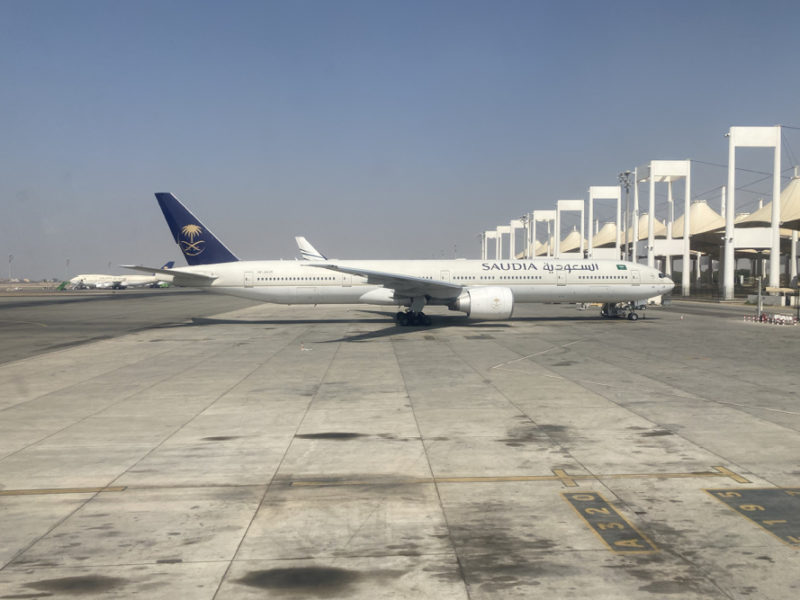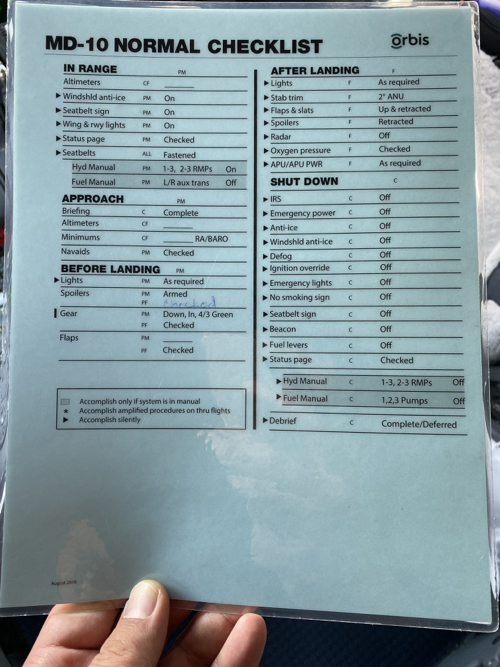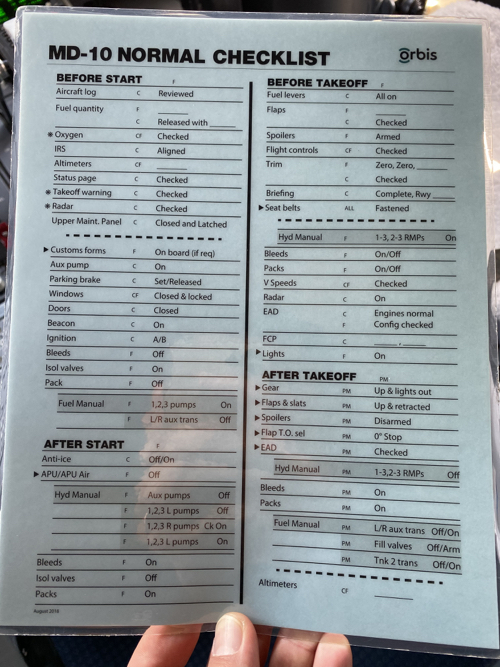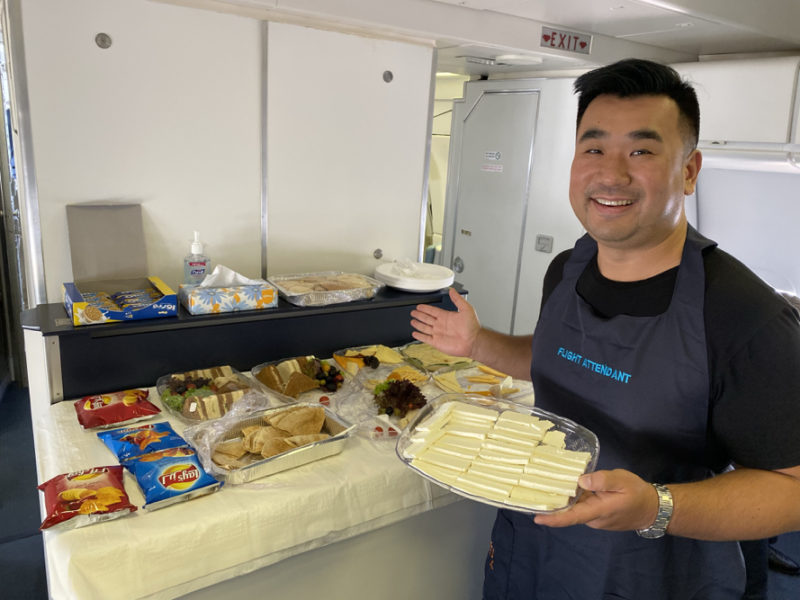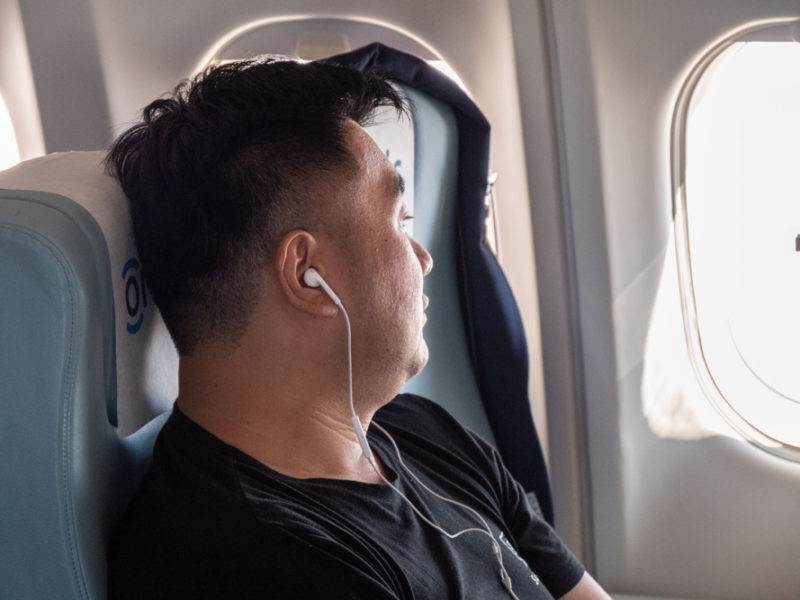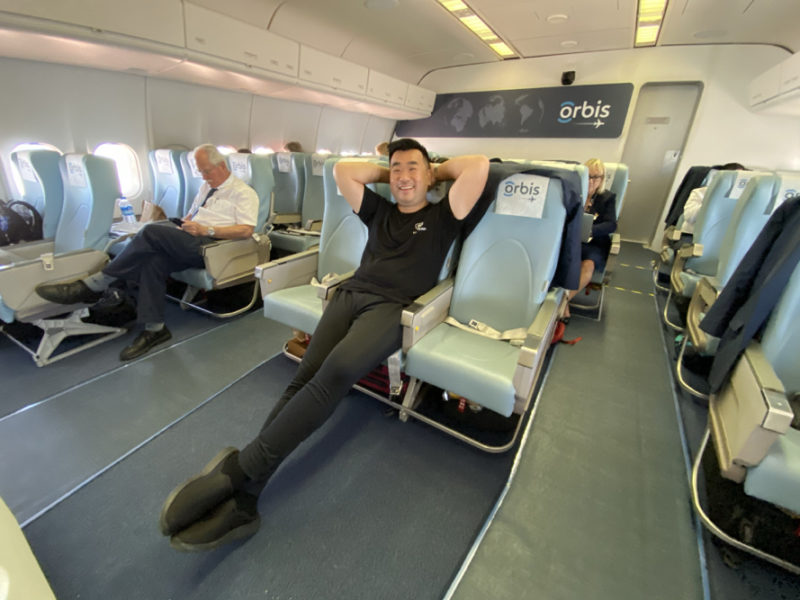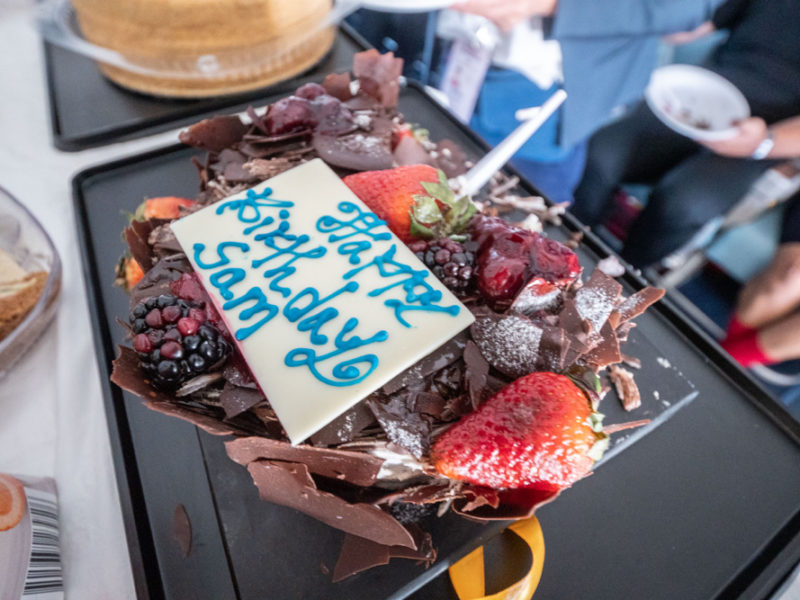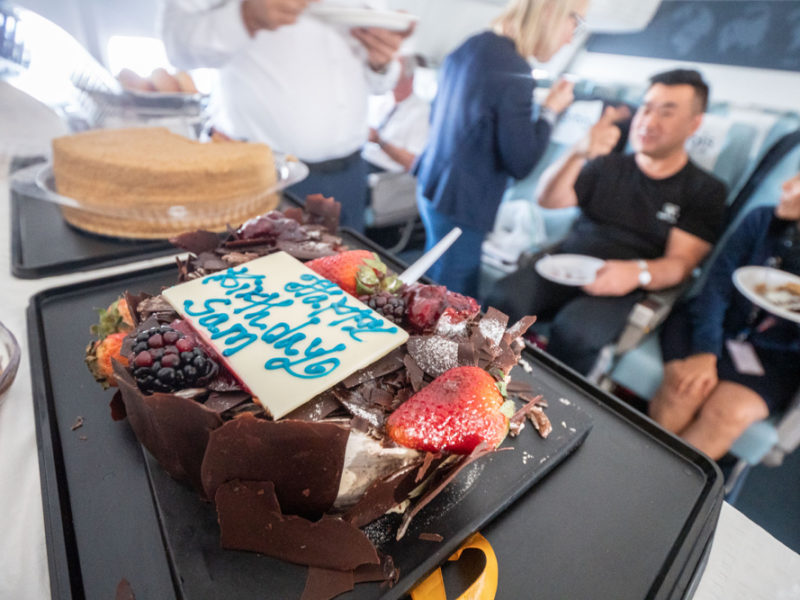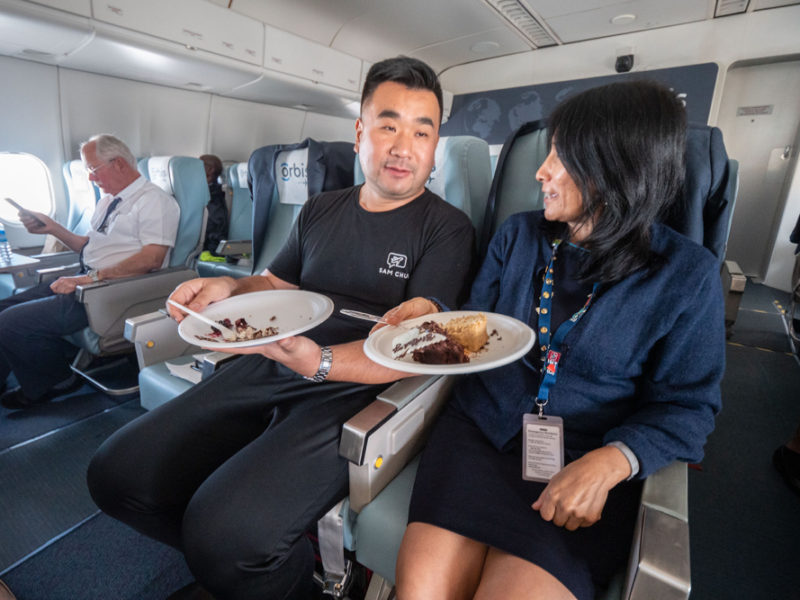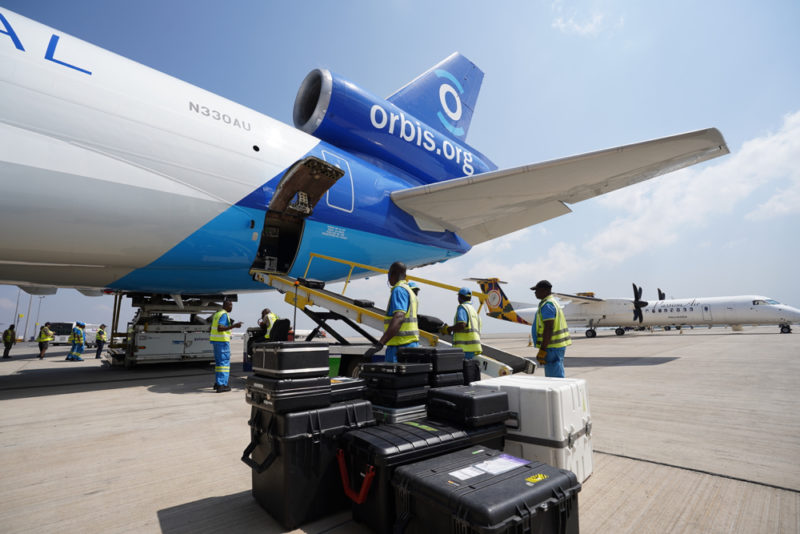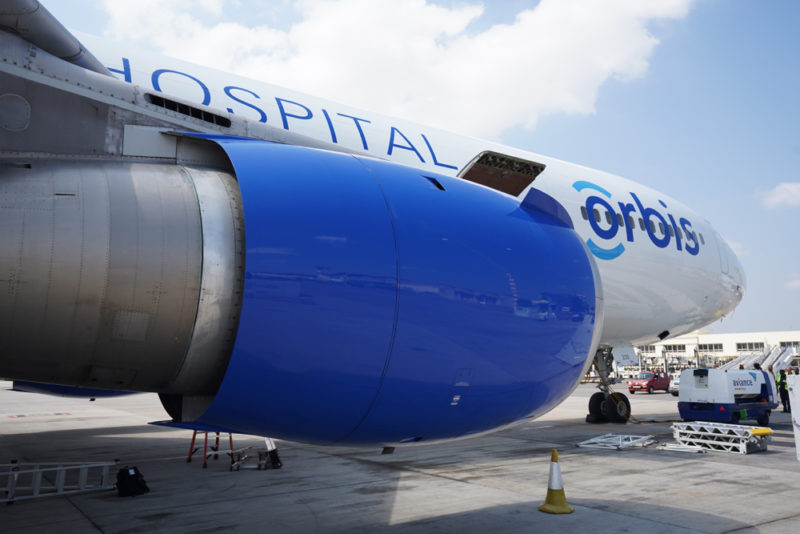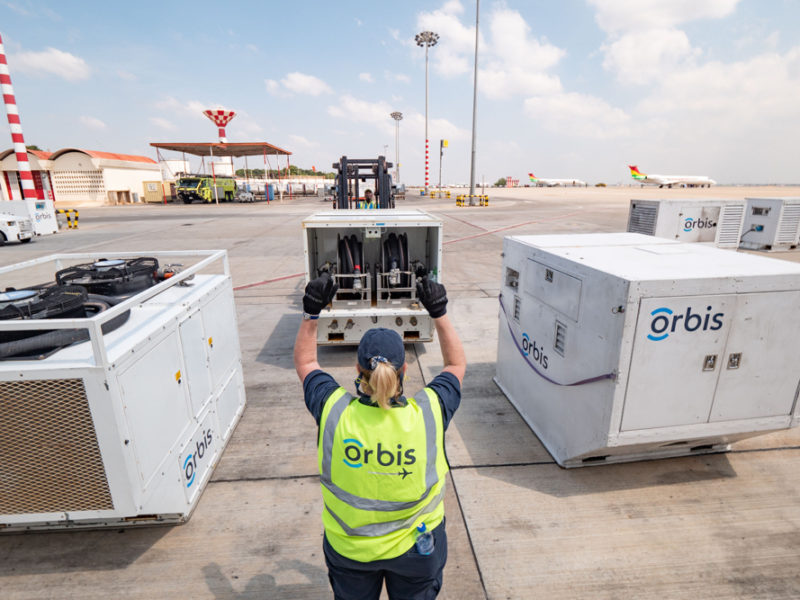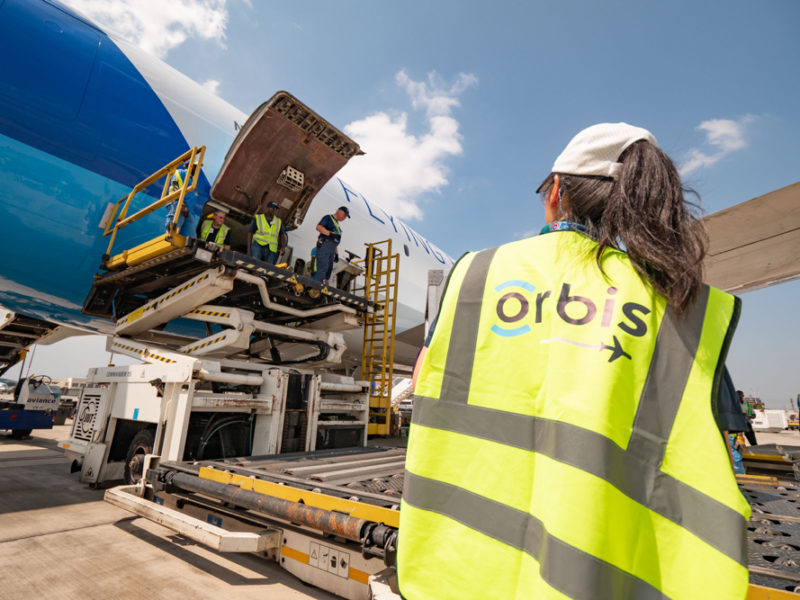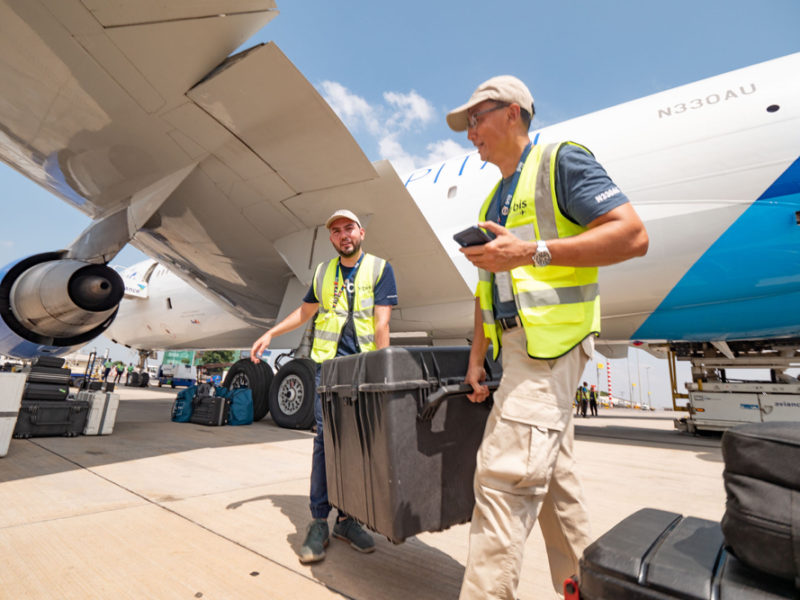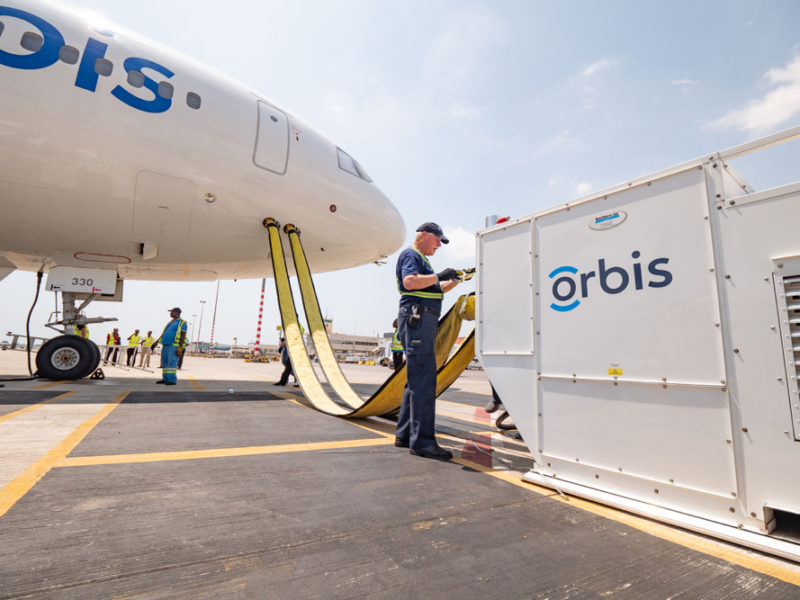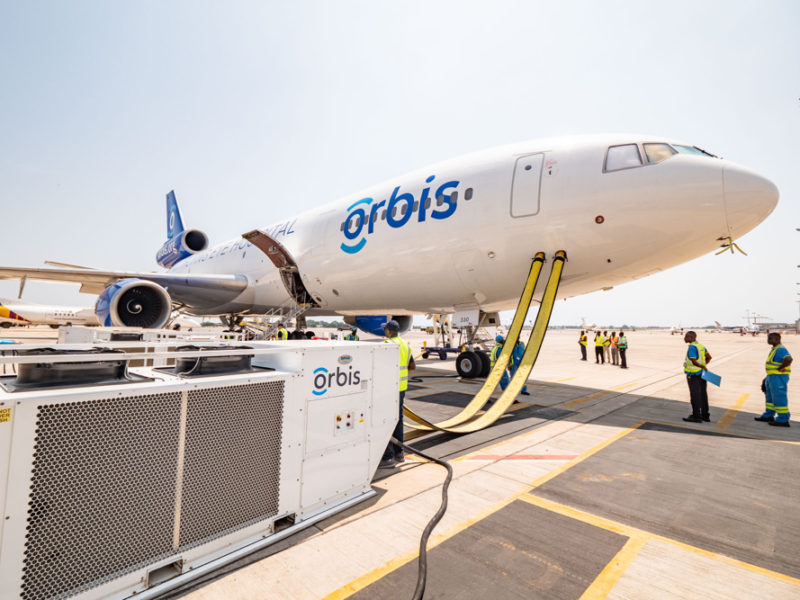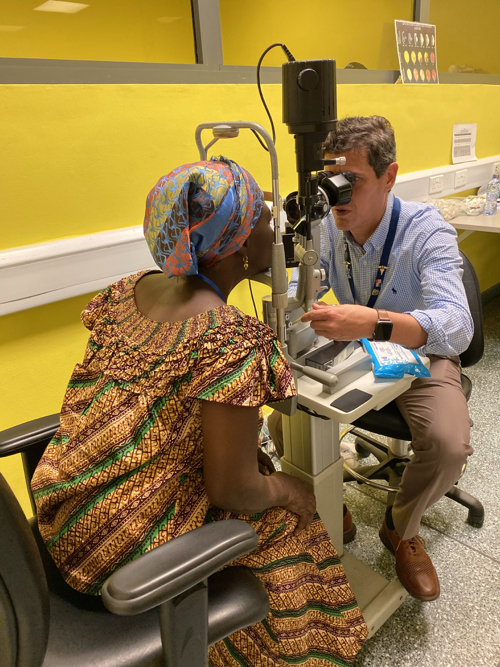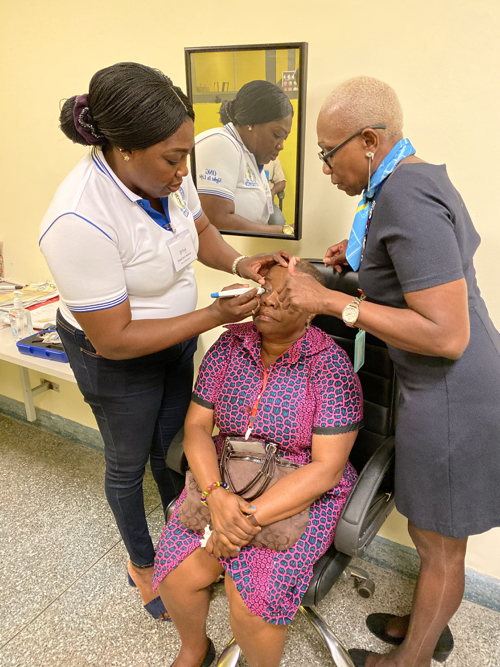The Orbis Flying Eye Hospital is unlike any plane I've seen before!
A state-of-the-art teaching facility complete with operating room, classroom and recovery room – all housed on board an MD-10-30.
I am delighted to follow Orbis on a trip to Ghana to see first hand how the Orbis team transform lives by preventing blindness and restoring eyesight.
In 2010, FedEx donated an MD-10 plane which took six years to convert into the Flying Eye Hospital. This third incarnation of the Flying Eye Hospital can fly nearly twice as far as its predecessor and requires only two pilots rather than three.
The Flight
On Nov 8th morning, I boarded the Orbis MD-10-30 at Dubai World Central Airport (DWC) heading to Accra, Ghana with a refueling stop at Jeddah, Saudi Arabia.
There were about 25 passengers including the pilots, mechanics, doctors, nurses, admin staff and myself on this flight. The captain mentioned to me the MD-10 does have the range to make a non-stop flight but it is more comfortable to have a refuel stop preparing in case of weather in Ghana requiring additional fuel.
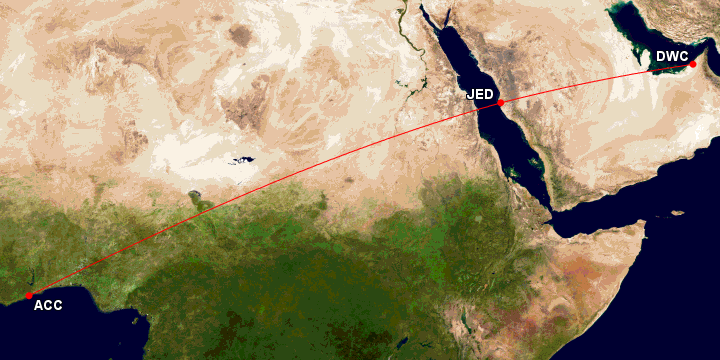
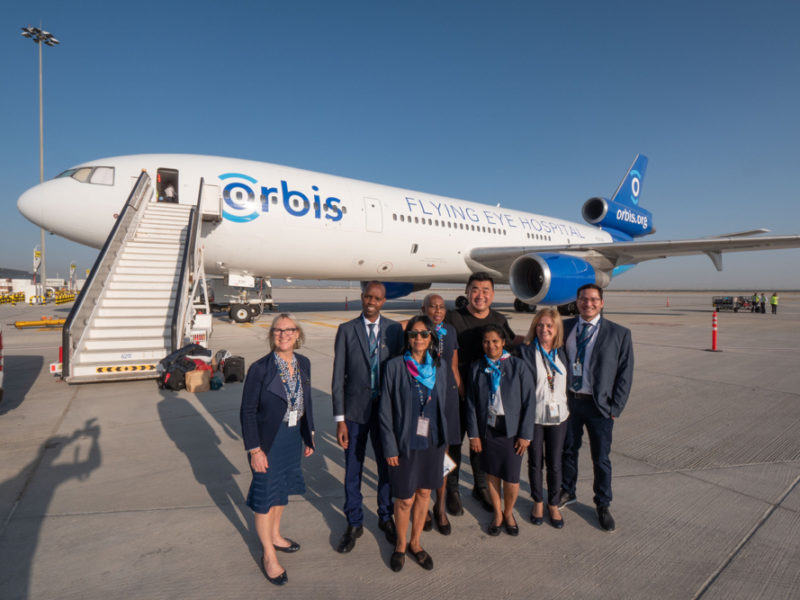
On-board the Flying Eye Hospital
This amazing aircraft has been an example of the marriage between medicine and aviation!
There are several compartments and rooms inside the plane. The first zone is a passenger compartment, which is also used as a classroom for lectures during training.
The rest of the compartments were locked down during flight. I was given just a quick glimpse of the facilities on-board. Everything is packed away and strapped securely. There are a state of the art operating room, patient care and recovery room, laser and simulation training room and changing rooms on-board. I will show you the transformation of the Flying Eye Hospital once arrived in Ghana.
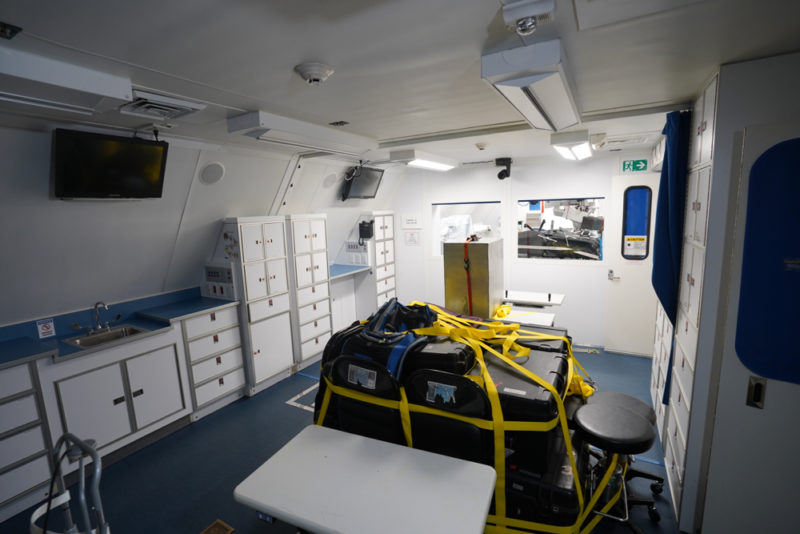
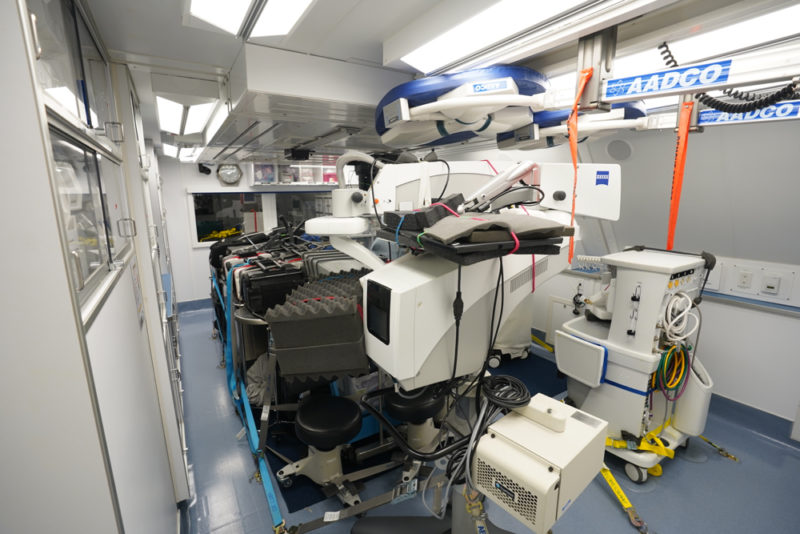
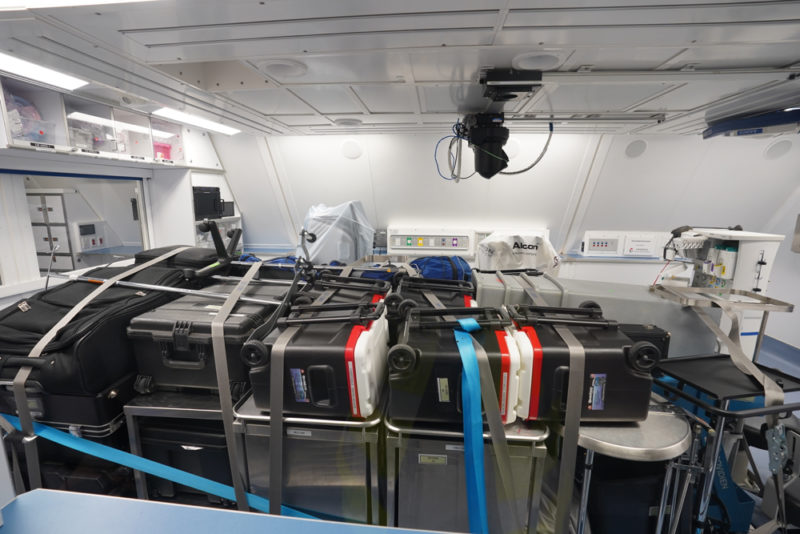
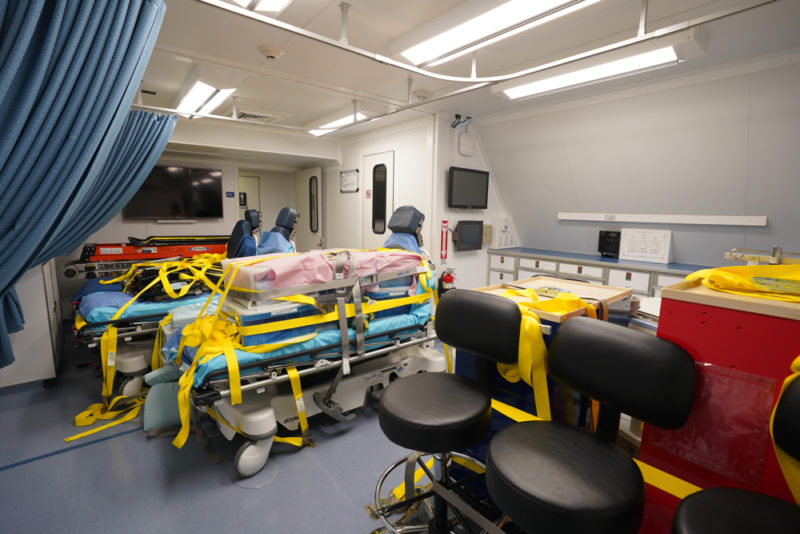
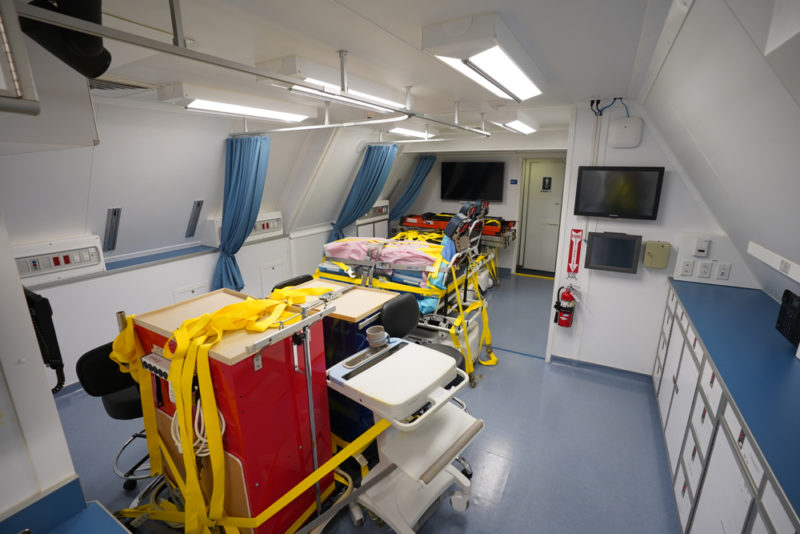
For the flight to Jeddah and Accra, I was only allowed to sit in the passenger compartment as the rest of the plane is secured in locked down mode.
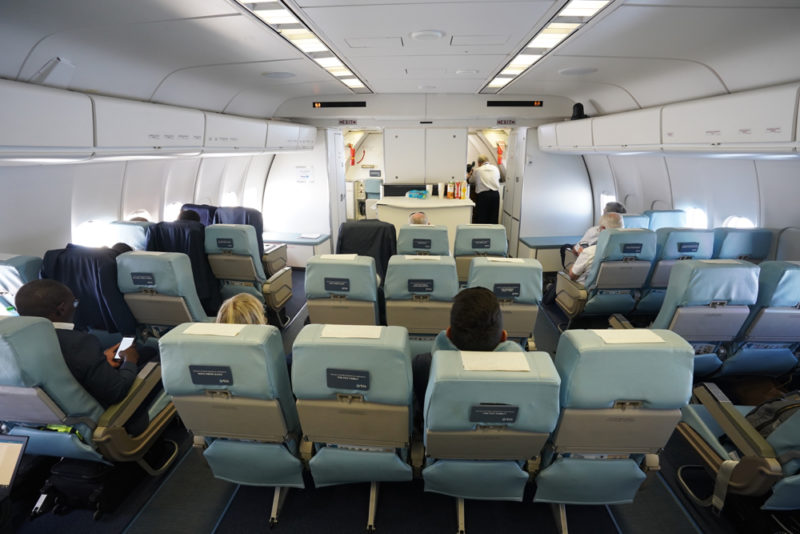
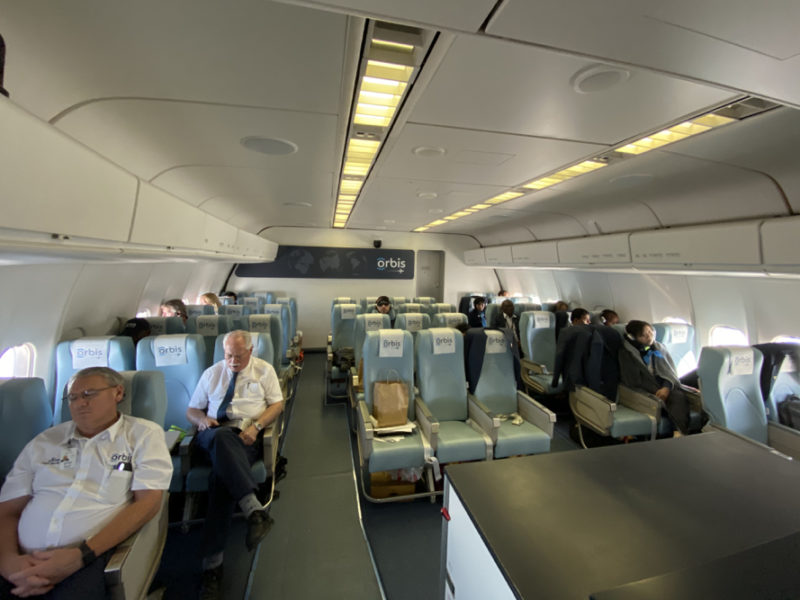
What's MD-10-30?
The MD-10-30 are modified from DC-10-30 with a digital cockpit for two cockpit crew in order to provide compatibility with the modern MD-11.
For Orbis, the pilots were all volunteers from FedEx who are very used to the MD-10. My flights pilots are not only both captains in rank, but they're also husband and wife; Pete and Cheryl Pitzer.
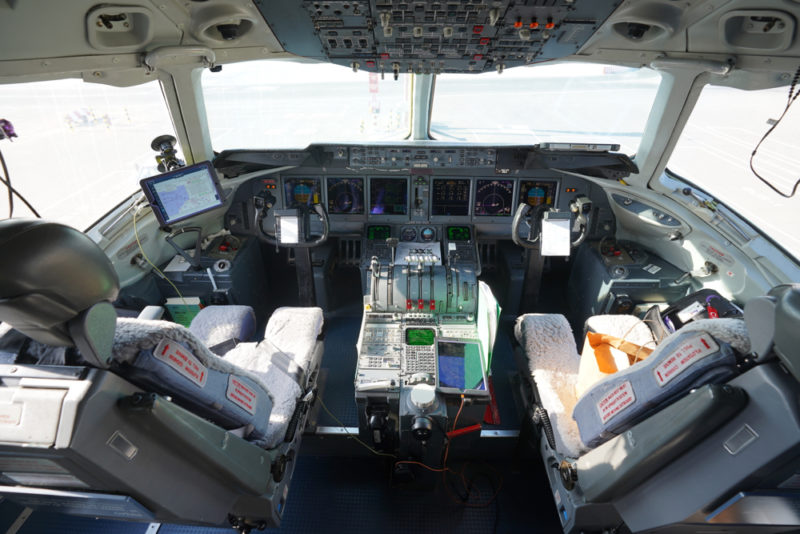
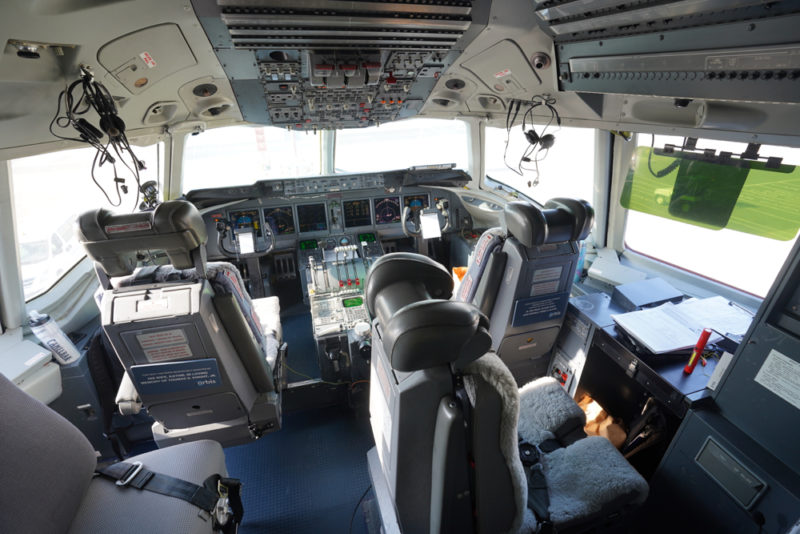
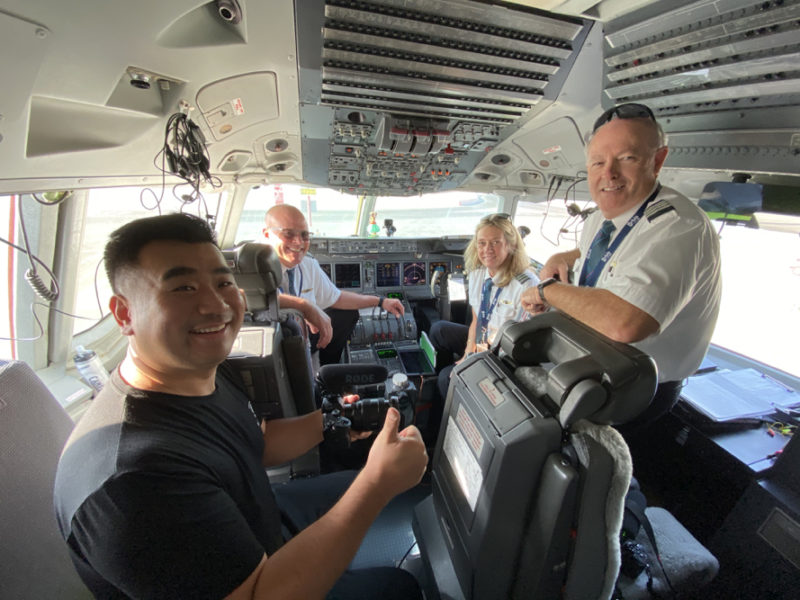
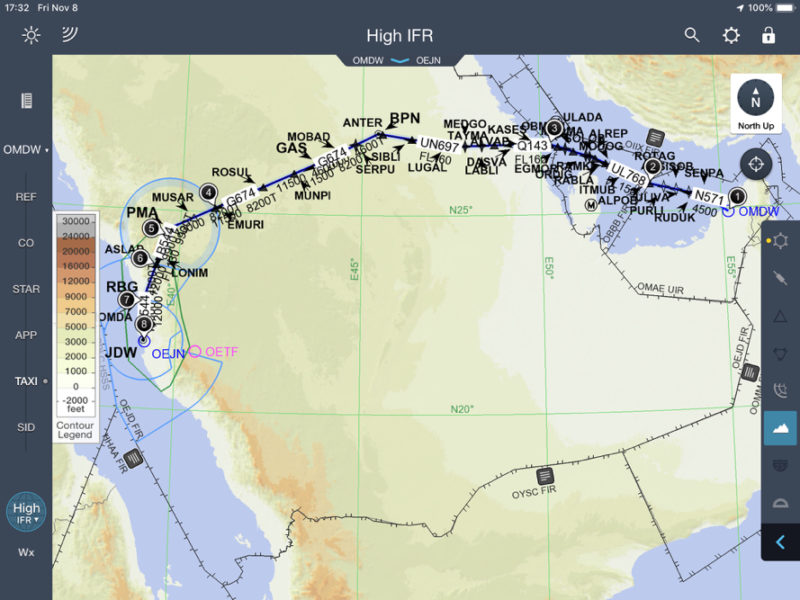
We lined up at Runway 12 at DWC. Flight time to Jeddah was 2 hours 45 minutes. Cheryl is flying from the right hand seat.
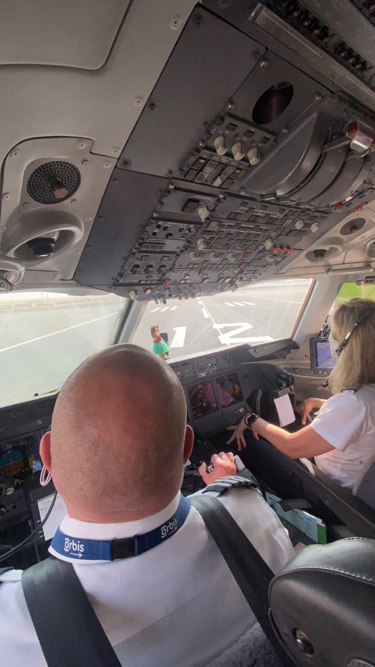
During our climb we have both the Jebel Ali Palm and Palm Jumeriah on our left and right side. Watch the takeoff in the video.
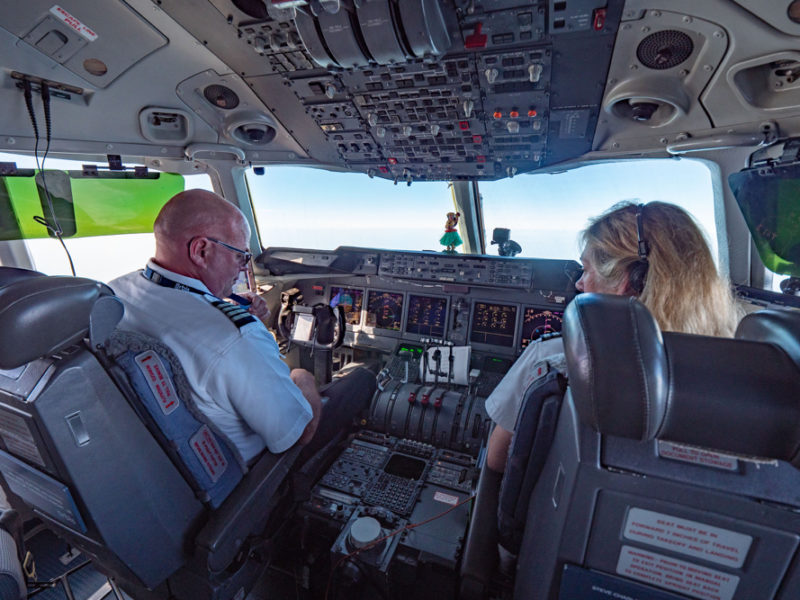
Breakfast was served by Orbis flight attendants, Orbis staff doctor and nurse who undertook the flight attendant training.
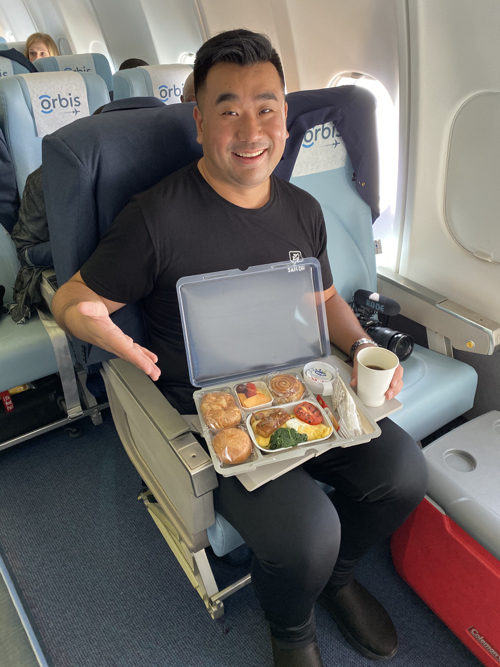
Flight was mostly smooth. There isn’t much scenery en-route over the vast desert of Saudi Arabia. Watch the flight in the video.
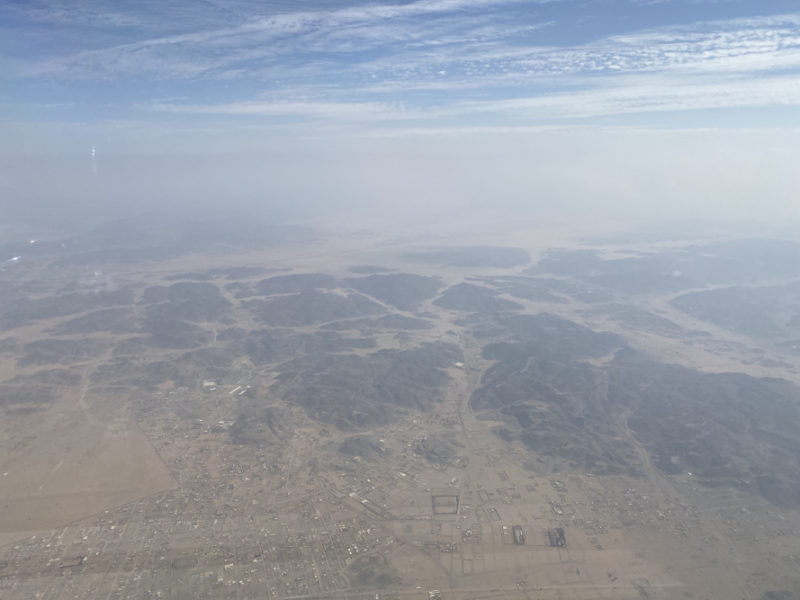
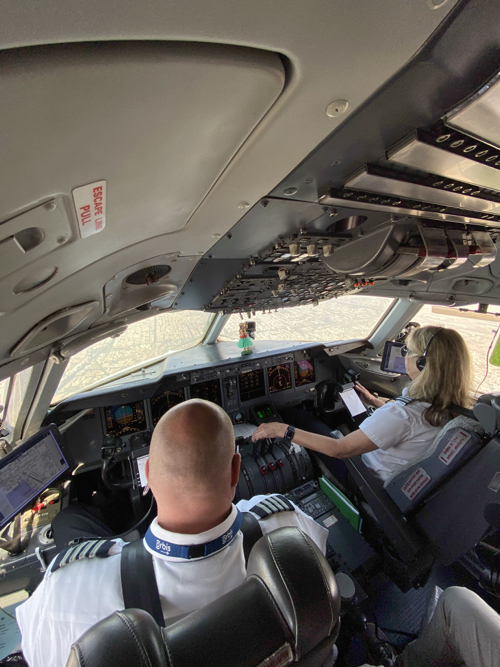
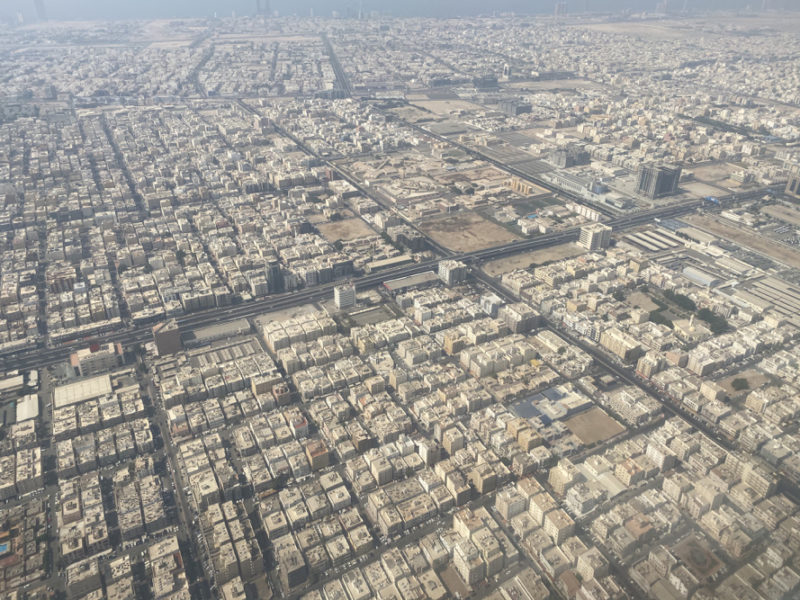
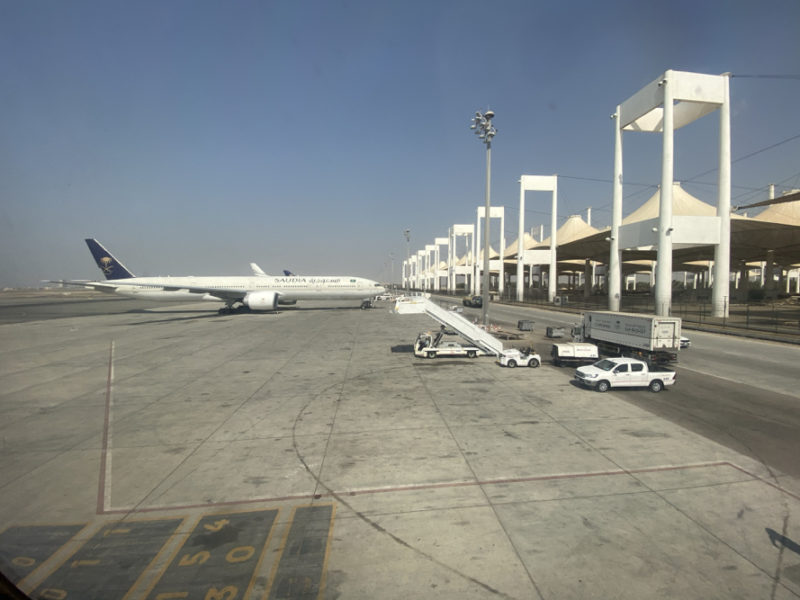
We parked near the Hajj terminal in Jeddah. The airplane is getting refueled and serviced during the 1.5 hours stop there. It was close to 40 degrees in Jeddah during the intense mid-day sun.
Our next flight to Accra was about 5 hours, flying at 30,000 ft and eventually climbed to 32,000ft. We would cross the Red Sea, head over towards Sudan, Chad, Nigeria, Togo, Benin and Ghana.
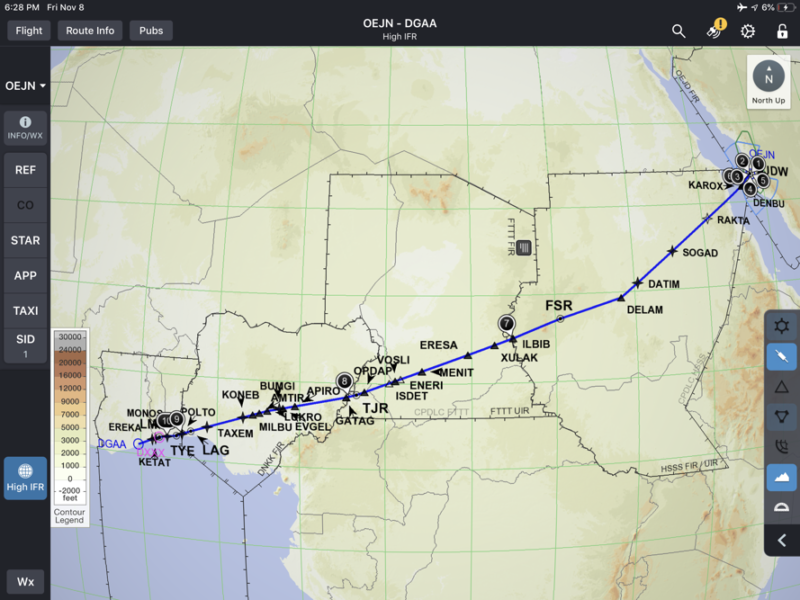
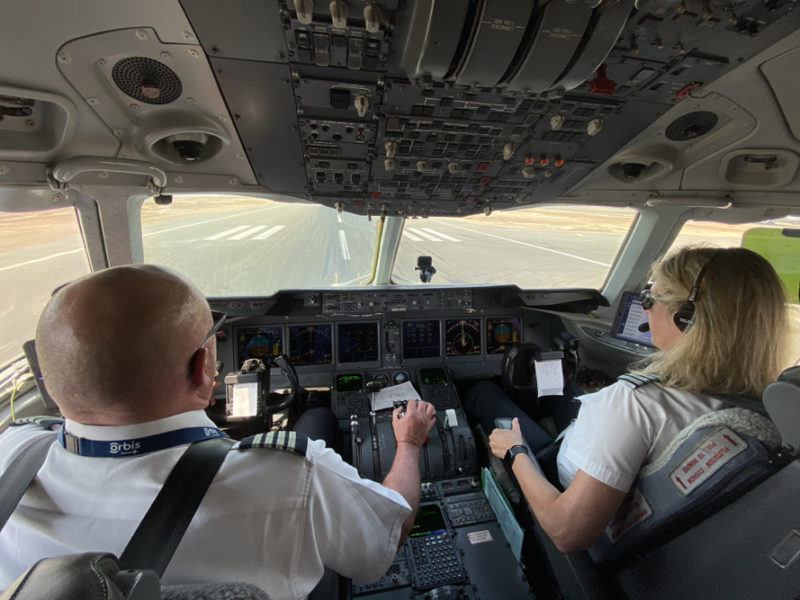
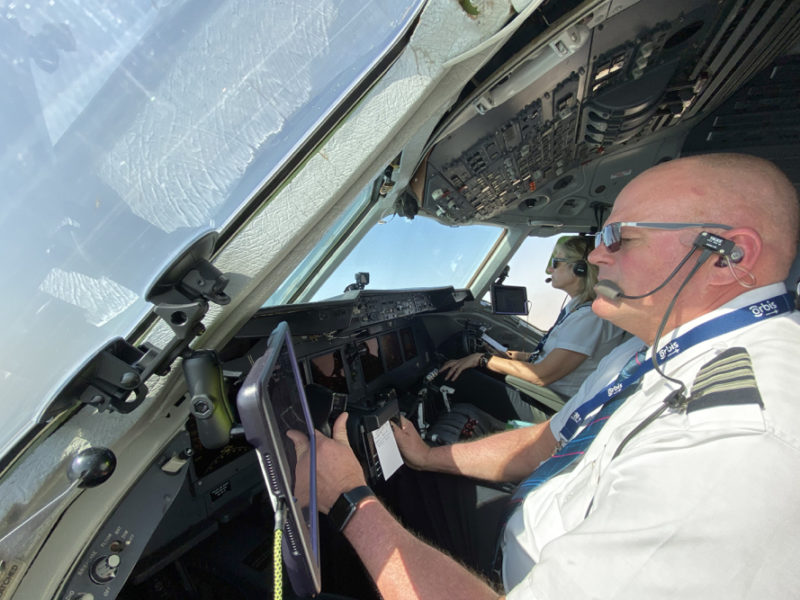
After takeoff, flight attendant put the snacks in a buffet style on the front middle table. At this point, I have also volunteered as a flight attendant to help out.
After the snack, lunch was served. There was a choice of beef or chicken steak. The catering was from Jeddah.
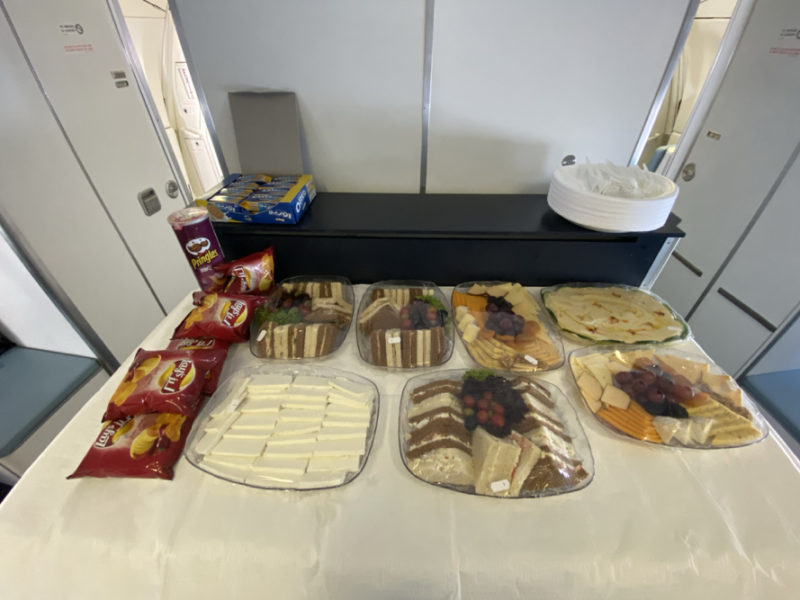
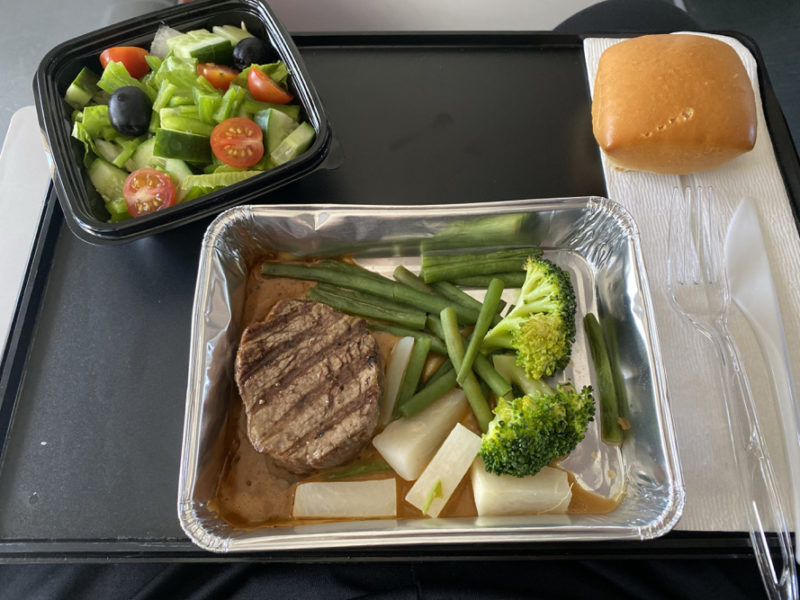
It was a rather uneventful flight as we crossed over Sudan, one of the largest country in Africa. I was able to observe in the cockpit. Just before I came back to my seat, a surprise was waiting for me!
It was my birthday the day before and the Orbis staff brought me a birthday cake!
I really couldn't think of a better way to celebrate my birthday with such meaningful mission on Orbis MD-10 to Ghana.
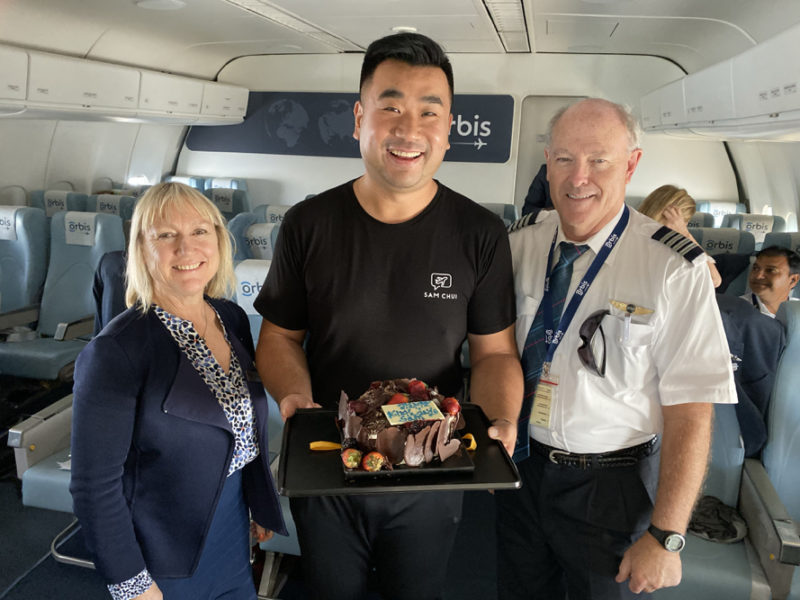
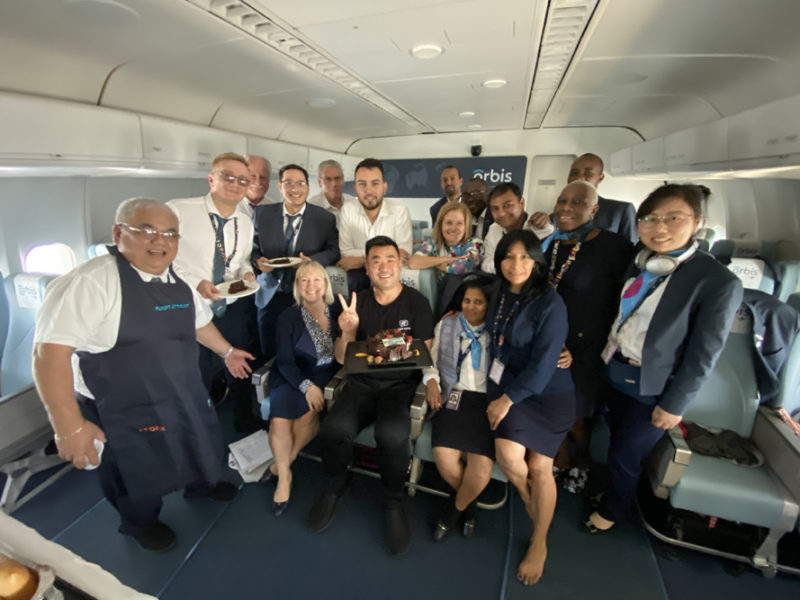
There were some CB cloud built up as we flew over the Gulf of Guinea towards Accra, Ghana. However, it was sunny and warm in Accra.

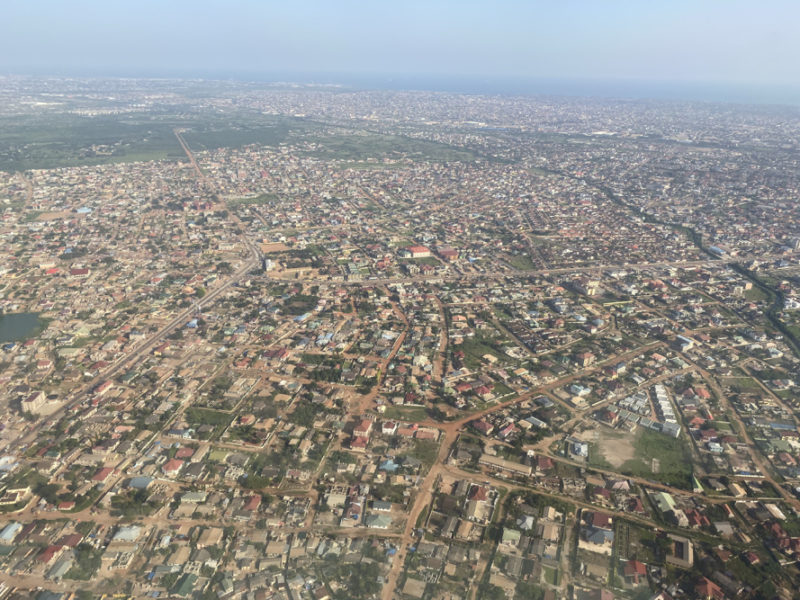
"Orbis1 clear to land runway 21"
We landed safely around 4:45pm local time. The runway was quite short given our plane is quite heavily loaded with hospital equipment. We rolled to a full stop after 8,000 ft on the runway. We received a nice welcome from the ground staff.
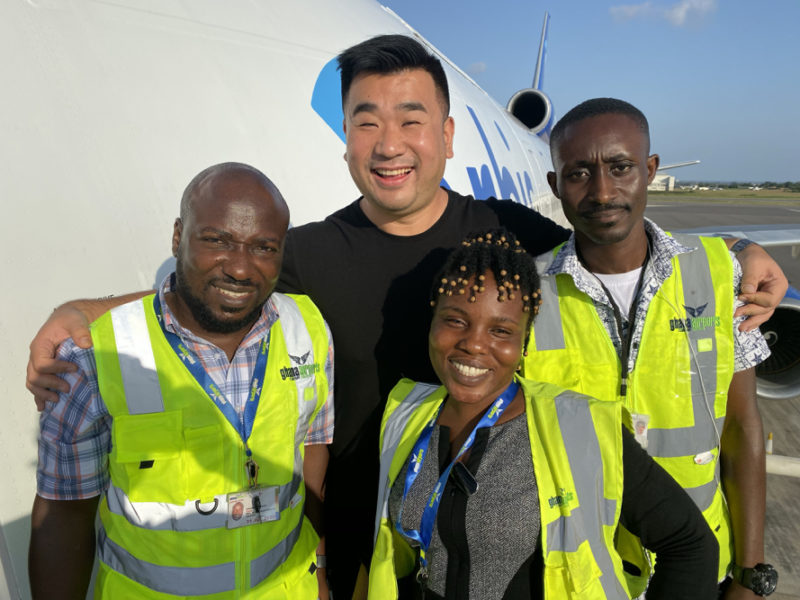
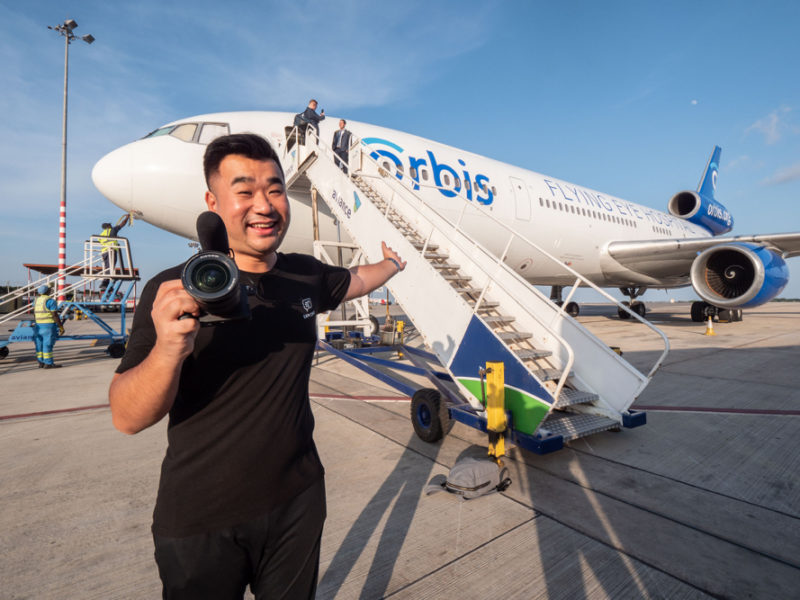
Transform into a World Class Flying Eye Hospital
The next day, Orbis crew were back at the airport to convert the Orbis MD-10 into a fully operating Eye Hospital. Watch the video for the amazing conversion.
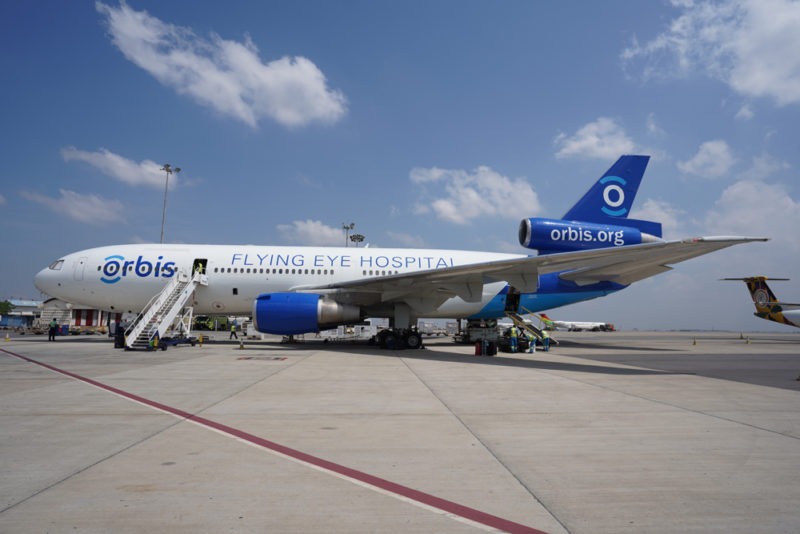
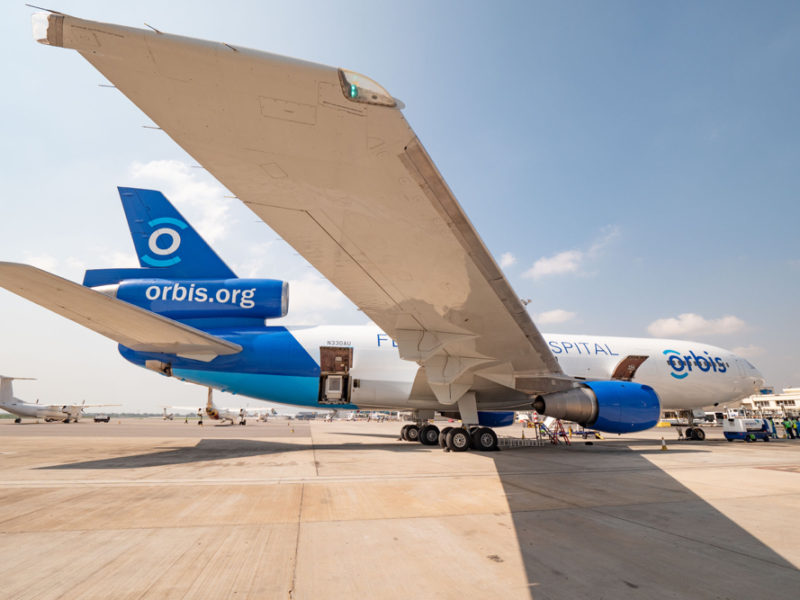
Several heavy pieces of cargo in the shape of container were off loaded from the cargo hold. Among these were 2 power generators and several modules to provide the Flying Eye Hospital uninterrupted power and clean water supply. The Flying Eye Hospital is designed to sustain on its own in remote places. It would run on its own power and water system.
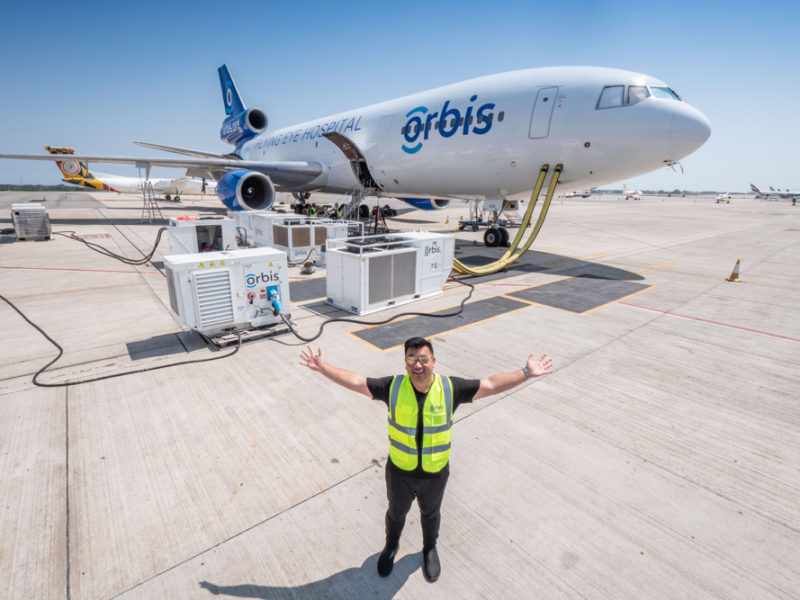
Medical supplies were offloaded and sent into the country's hospital.
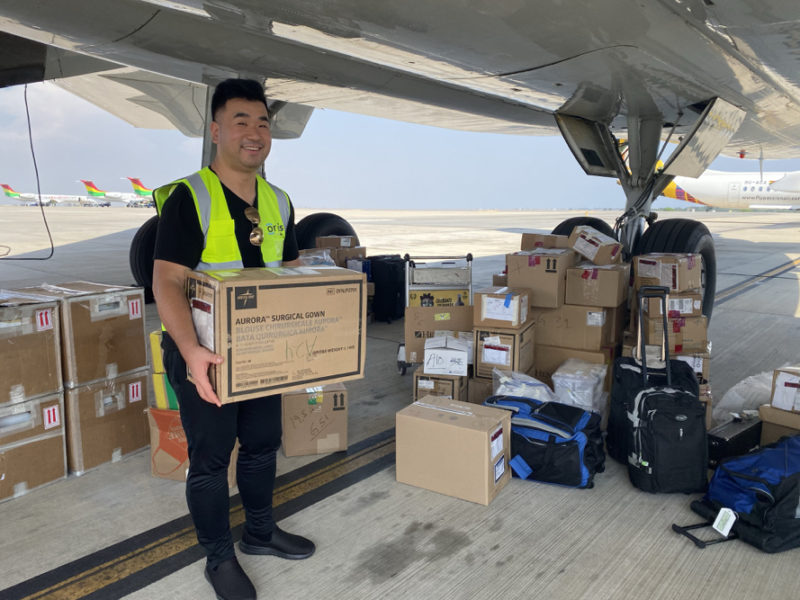
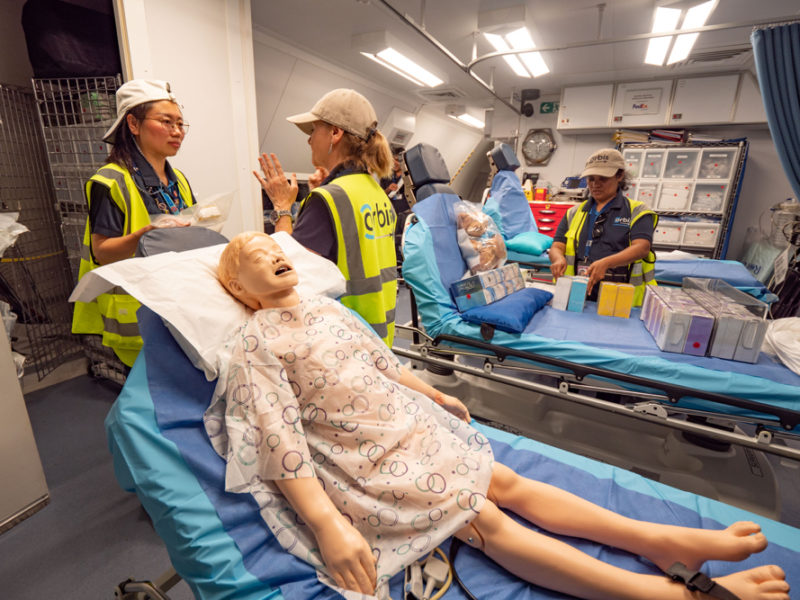
The transformation was not just outside, it is happening inside as well. Nurses and doctors were busy unstrapping stowed away medical equipment, counting out the medical supplies and cleaning up the entire airplane. Within 3 hours, the entire Flying Eye Hospital was transformed. Take a look at the pictures below.
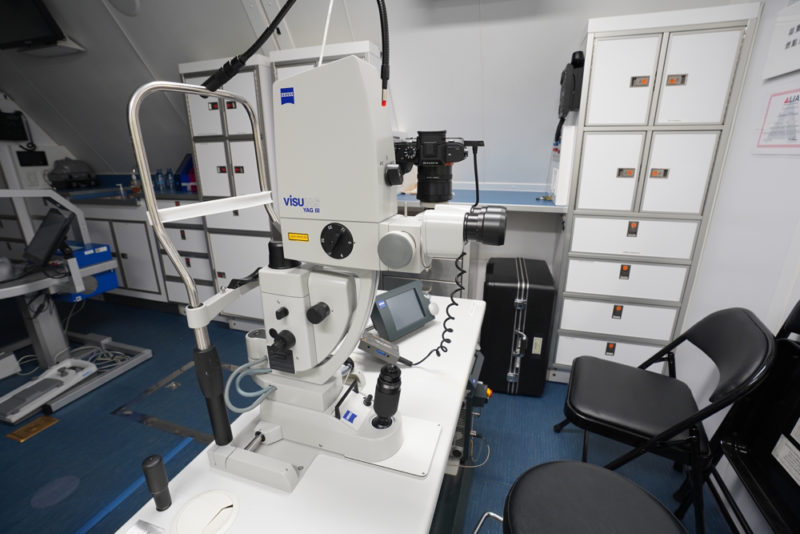
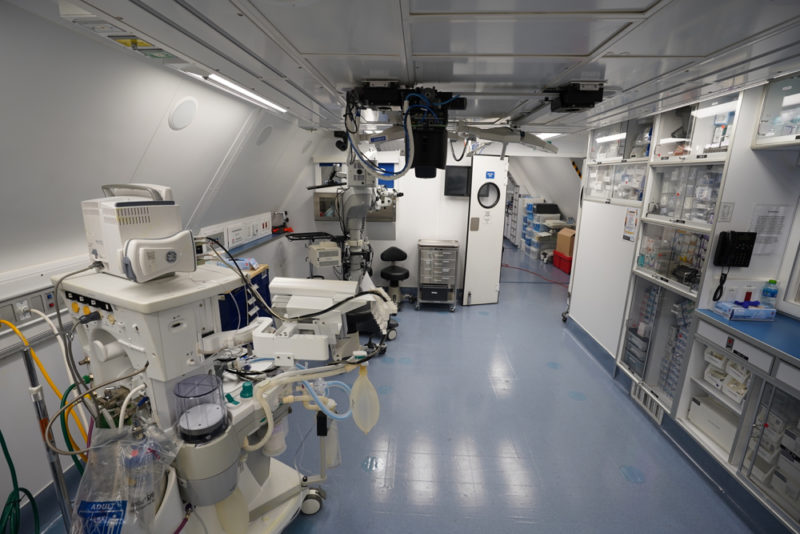
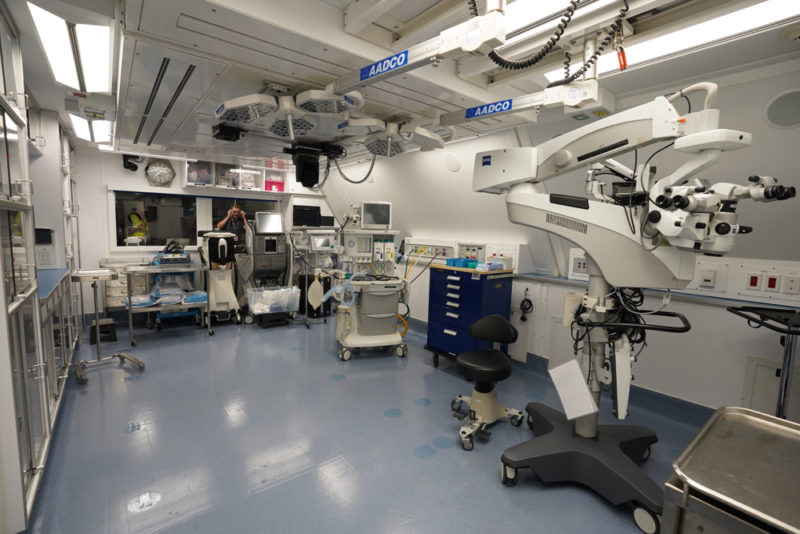
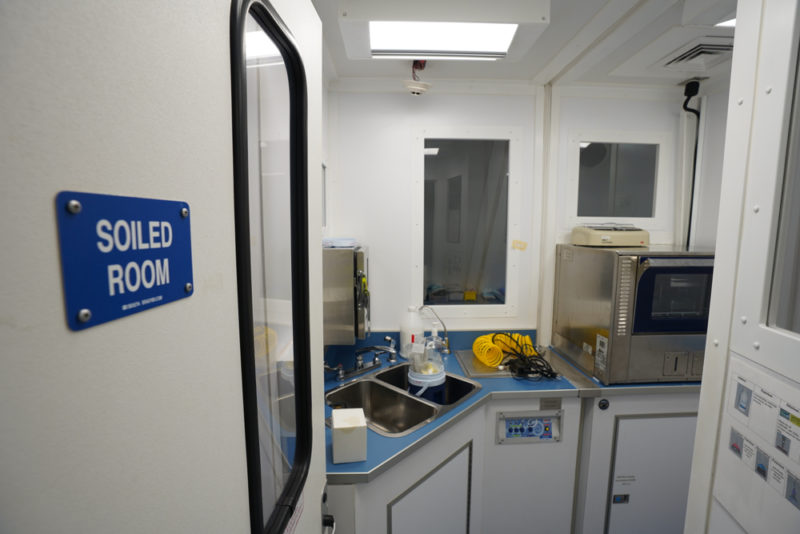
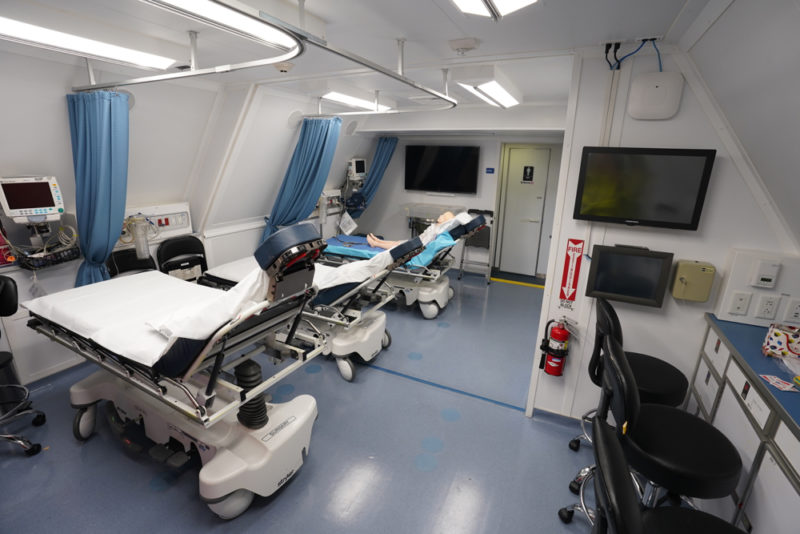
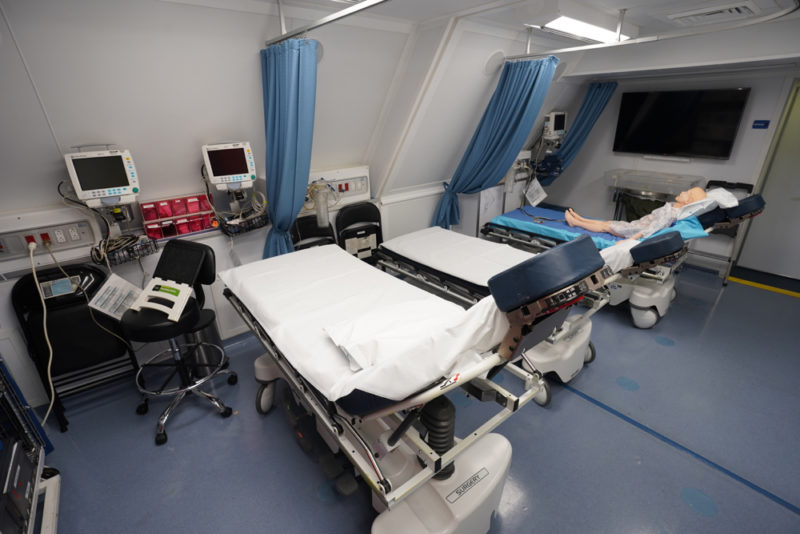
What's also transformed is inside the forward cargo hold. It was transformed into a maintenance and bio-med engineering office. Maintenance personnel can monitor the Flying Eye Hospital operations from the lower cargo deck.
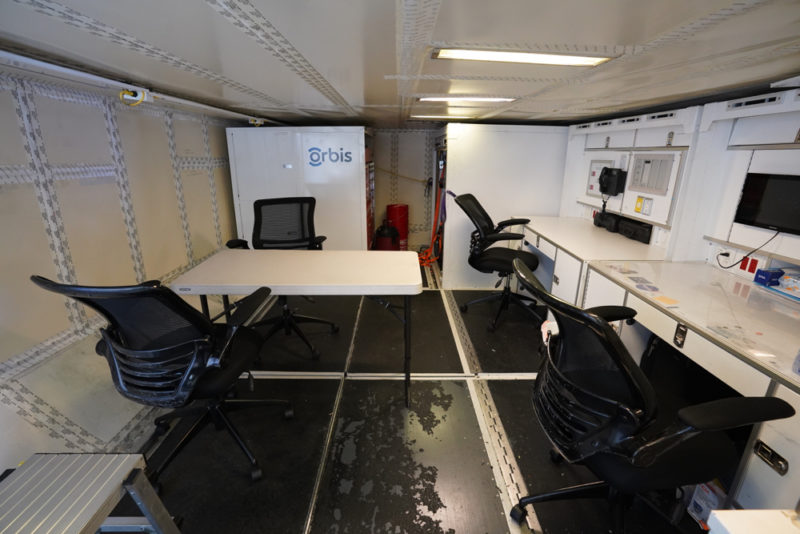
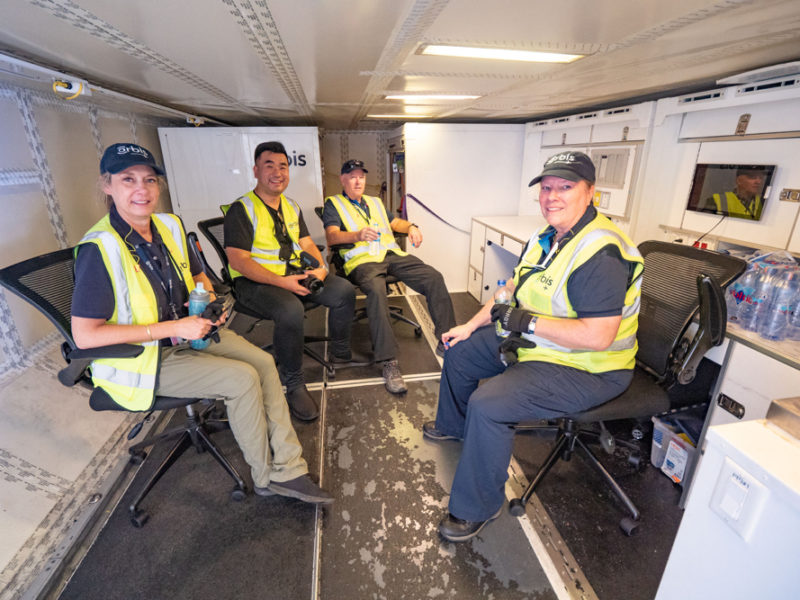
With the Flying Eye Hospital ready for patients and training local doctors and health professionals, the next step is going to a local hospital to screen patients and bring them into the plane.
This is not the first time Orbis Flying Eye Hospital worked in Ghana. It’s the third time the plane has been in Ghana where Orbis teams will be working alongside their partners - the Ministry of Health, the Korle Bu Teaching Hospital and the Komfo Anokye Teaching Hospital.
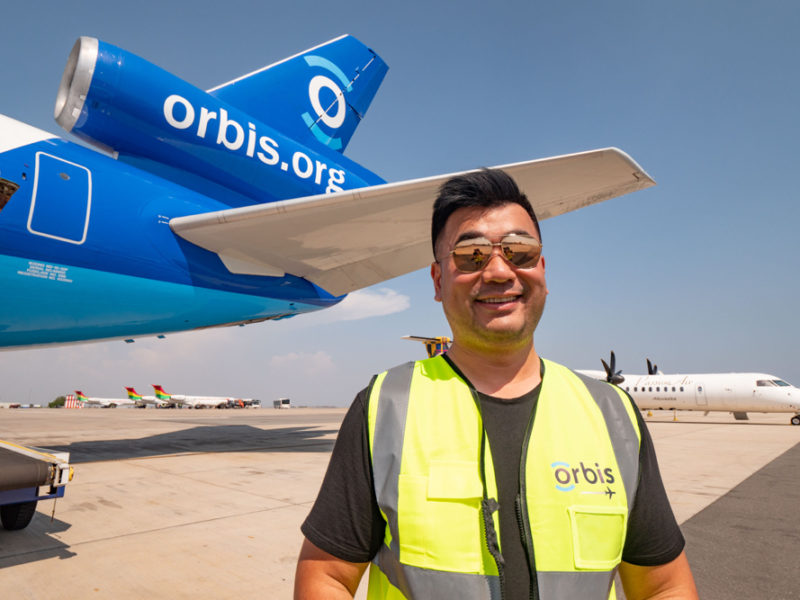
Local Hospital Screening
On Monday Nov 11th, the Orbis Flying Eye Hospital team went to Lions Eye Center at Korle Bu Hospital in Accra, Ghana. The team screen through about 100 eye patients and also provide training assistance to the local doctor and nurse teams.
The screening categories were Cataract, Glaucoma and Medical Retina. Patients also go through anesthesiology assessment. Once the screening is done, the next step is to bring some patients on-board the Flying Eye Hospital to undergo eye surgery. Local doctors and nurses are invited on-board for training.
Ghana has only 1,117 eye care professionals (primarily in urban areas) for over 28 million people, with less than 90 ophthalmologists, 500 eye nurses, 320 optometrists and 200 opticians nationwide
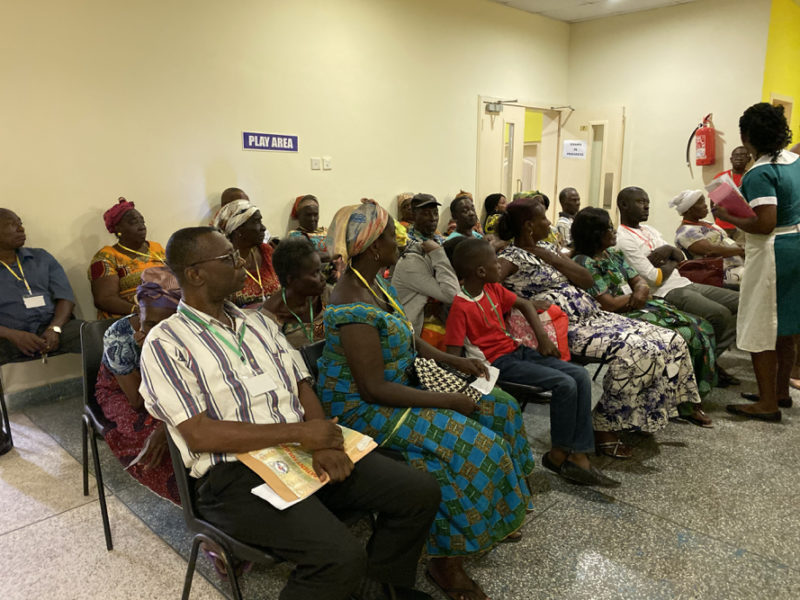
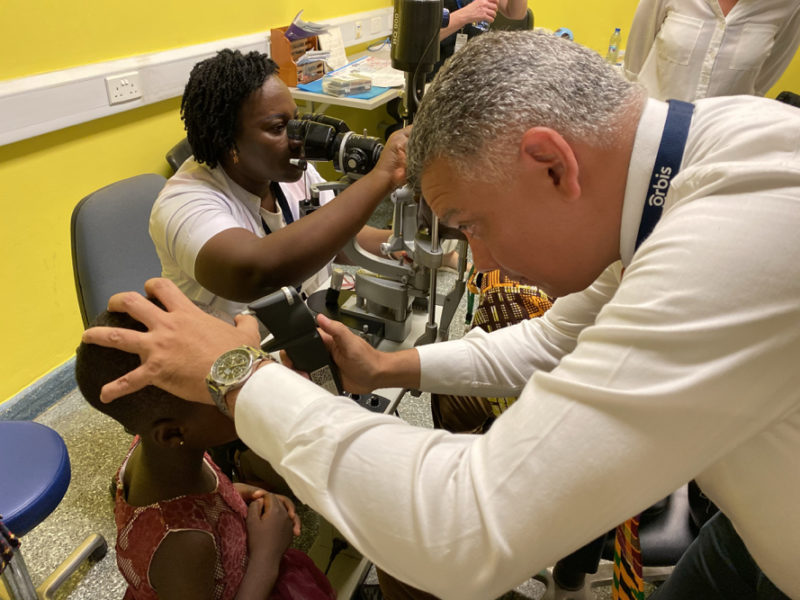
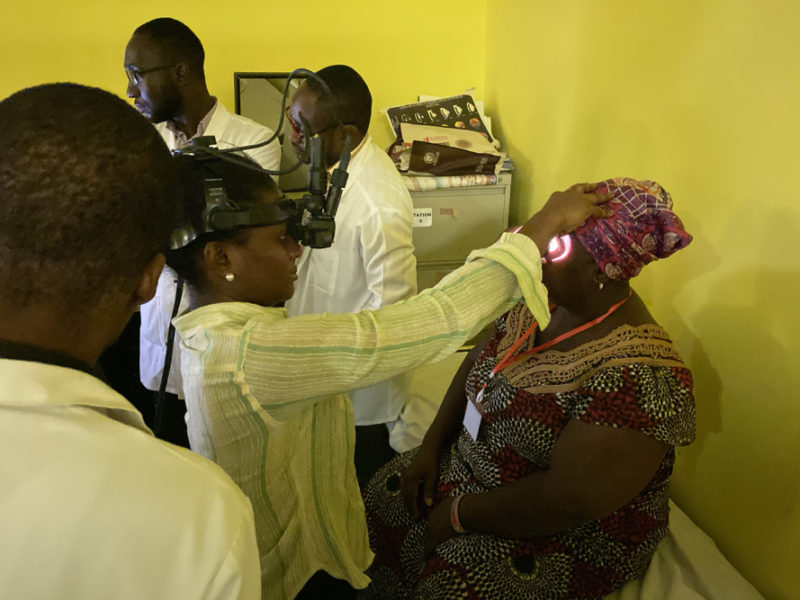
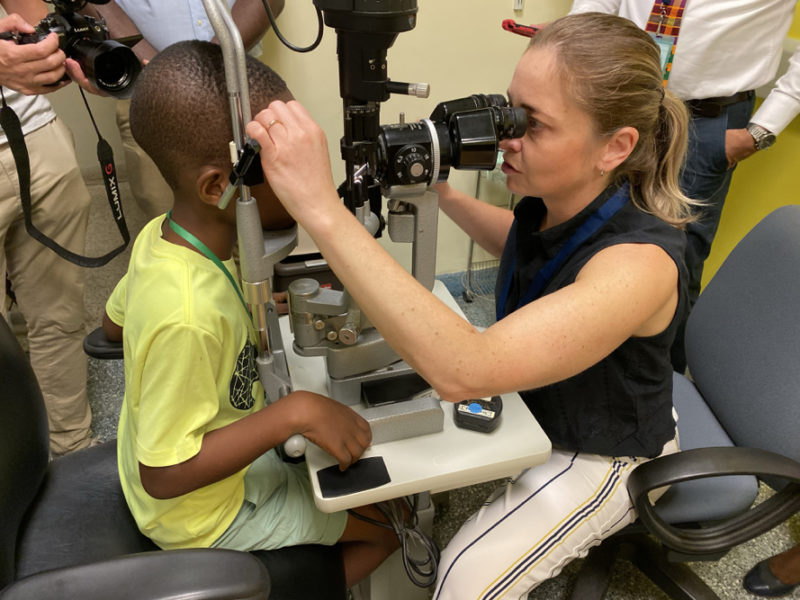
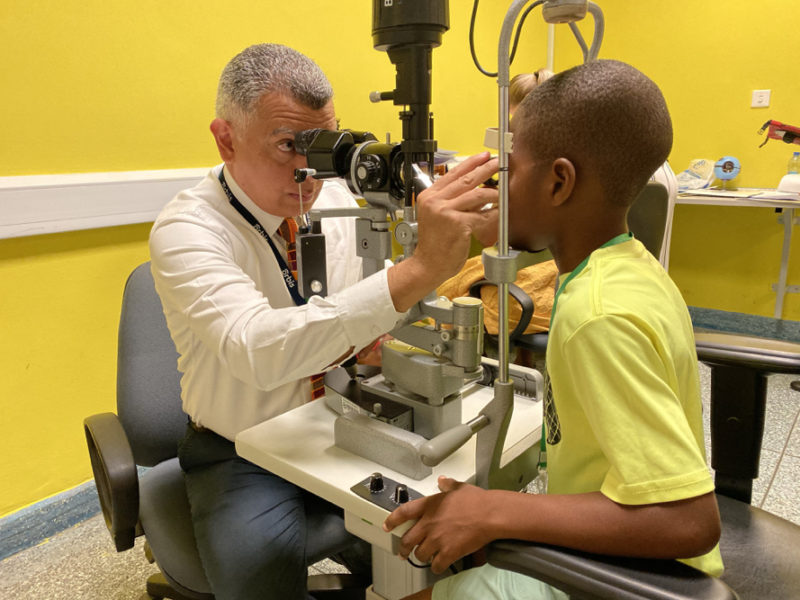
In Ghana, around 6,300 children are blind due to avoidable causes
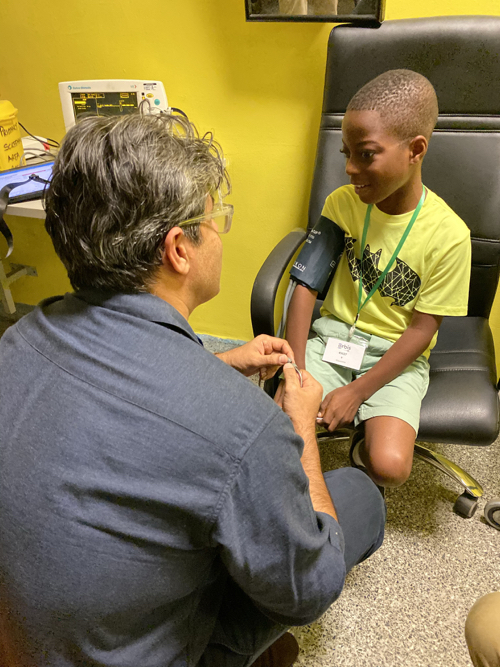
Flying Eye Hospital Surgery On-Board
The next day, November 12th we went back to the plane. Today, the Flying Eye Hospital is in full swing. Ambulance brought in patients directly to the plane. 4 patients undergo Glaucoma and Cataract surgery that day with live training provided to local doctors and other health professionals.
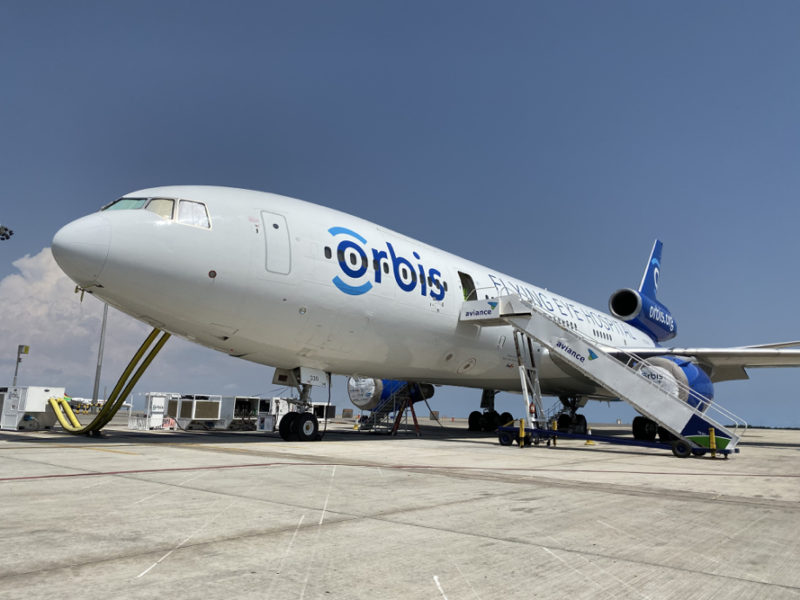
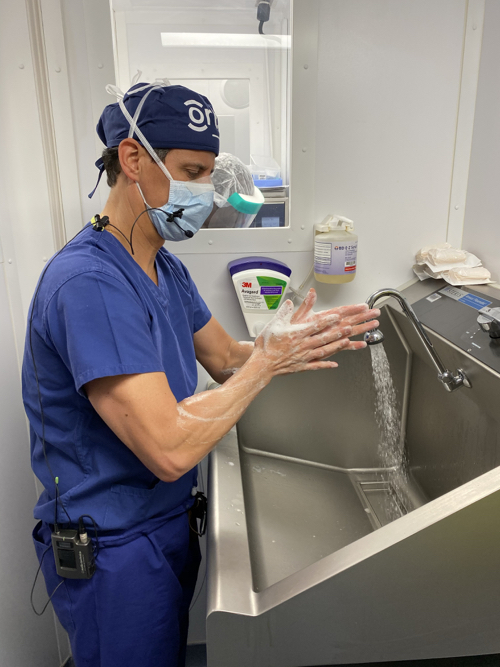
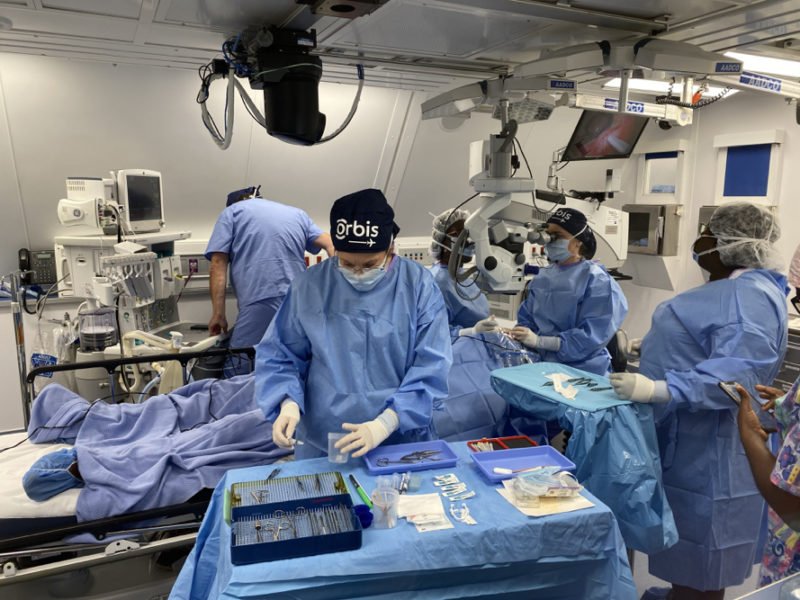
All the surgery is broadcast live to the classroom in the front of the plane, others can also watch the broadcast over the internet through Orbis’s telemedicine platform, Cybersight.
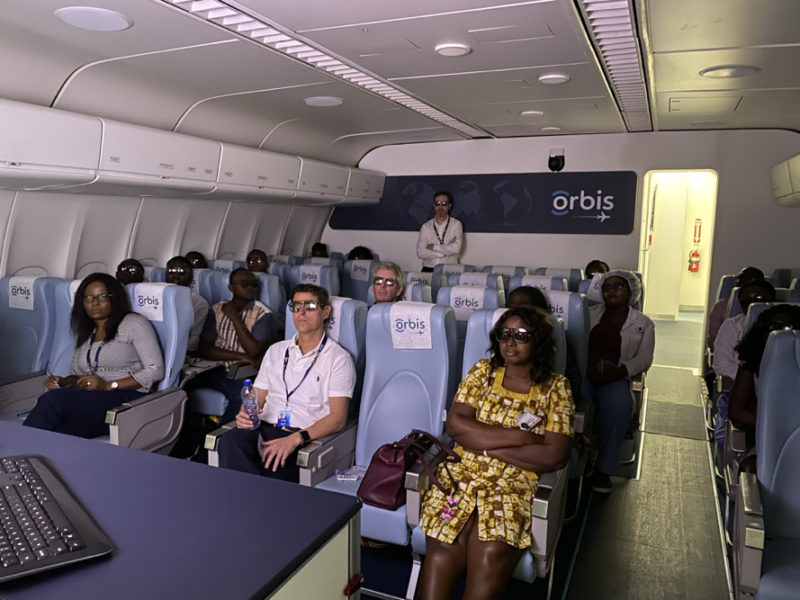
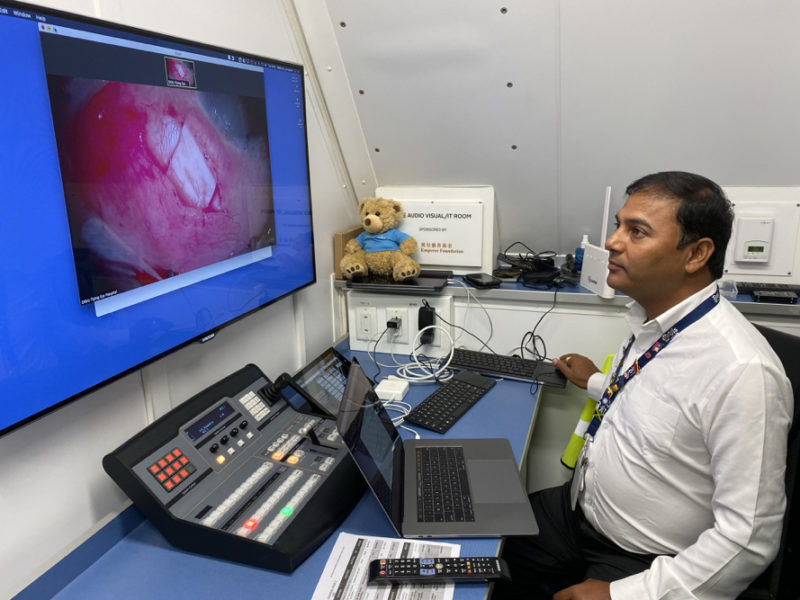
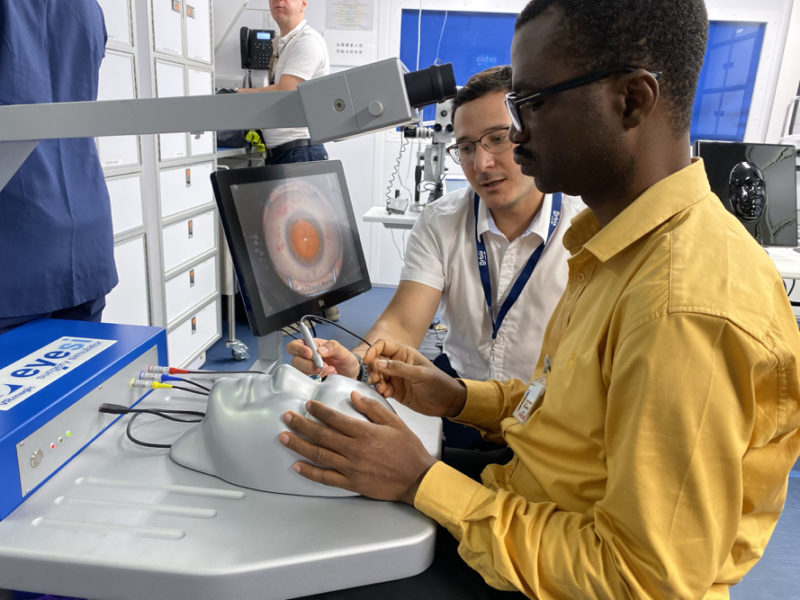
I've met one patient Mary in the recovery room who just undergone cataract surgery on her eye. She was in a good spirit and wears a mask on her left eye after successful surgery.
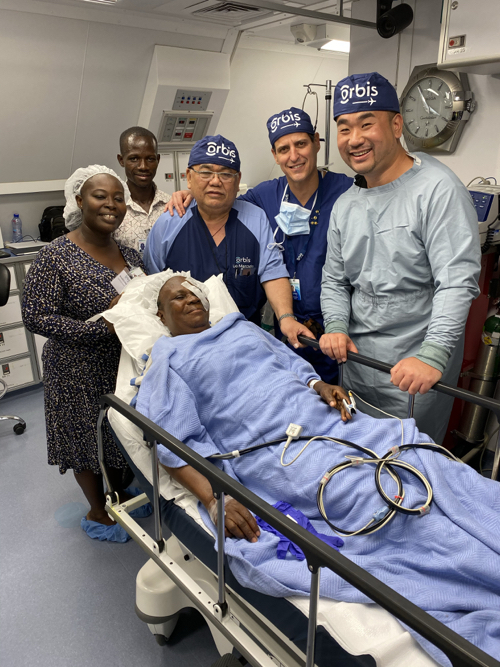
AftAfter 30 minutes in the recovery room, Captain Pete Pitzer escorted Mary off the plane to go home in a waiting ambulance. Mary was back the next day in the hospital for a final check up and remove the patch on her eye. She had a great smile on her face.
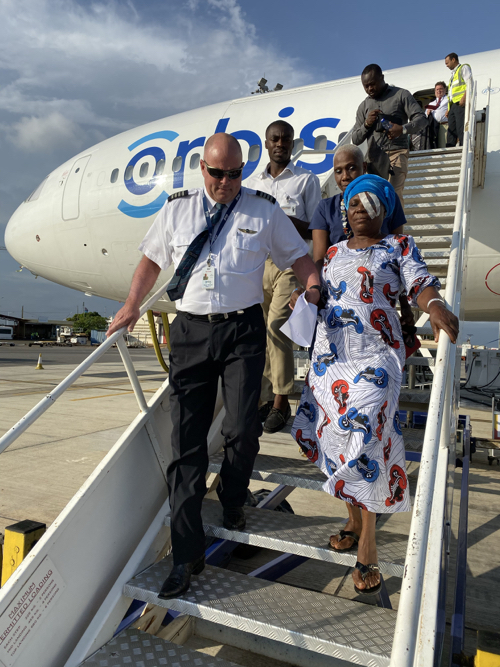
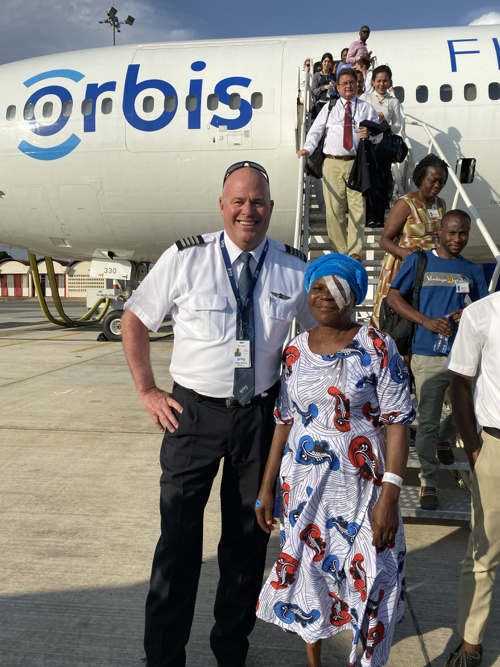
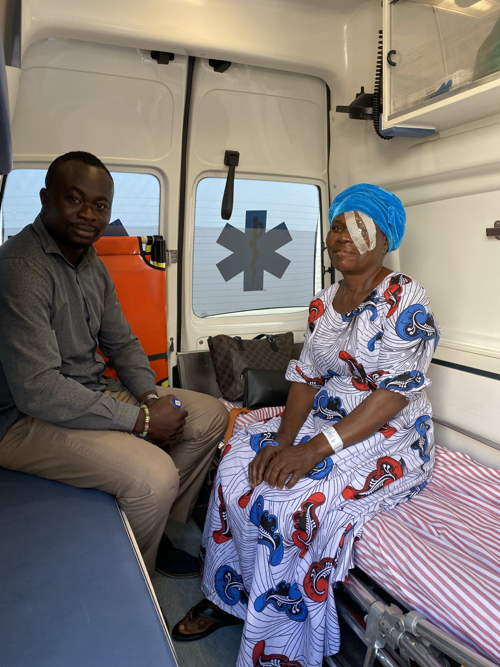
There’s nothing more beautiful than seeing this beautiful world in your own eyes.
I would liketo thanks Orbis for the great week seeing it first hand how the Flying Eye Hospital team restores eyesight and trains others to transform lives in Ghana. It was one of the most meaningful weeks in my life. Orbis uses the miracle of flight to bring quality training programs and sight-saving care to communities in need around the world.
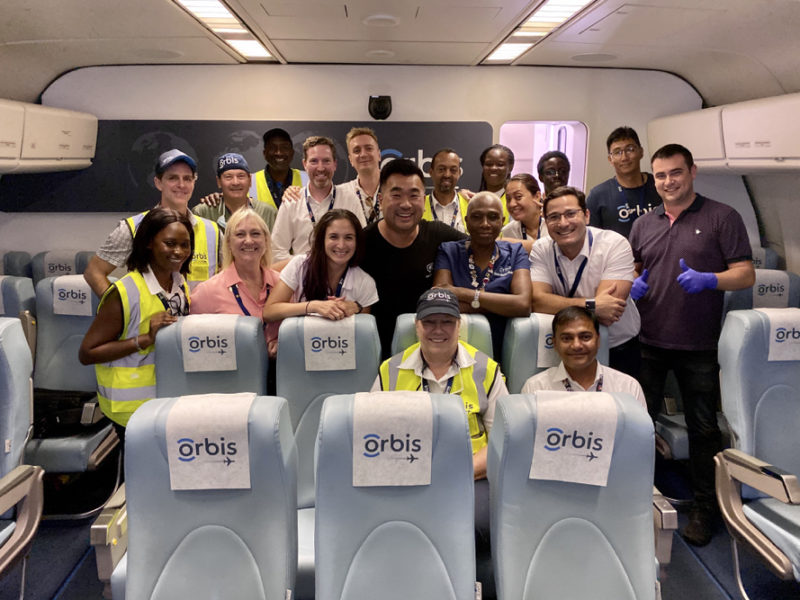
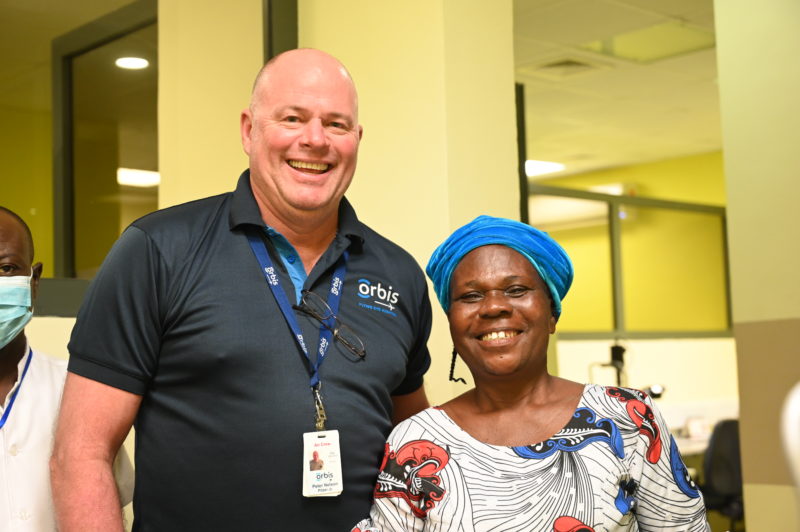
What you can help
I hope you have enjoyed my journey with Orbis! Together we can make a difference! I will be donating all of the video advertising proceeds to Orbis to help prevent blindness and restore eyesight for those less privileged. You can make a difference too!
For as little as $25, you can help a child to regain eye sight through cataract surgery. For $100, Orbis can train a local doctor to help many prevent blindness.
The smile on the patient's face when they regain eyesight was one of the best memories ever!


